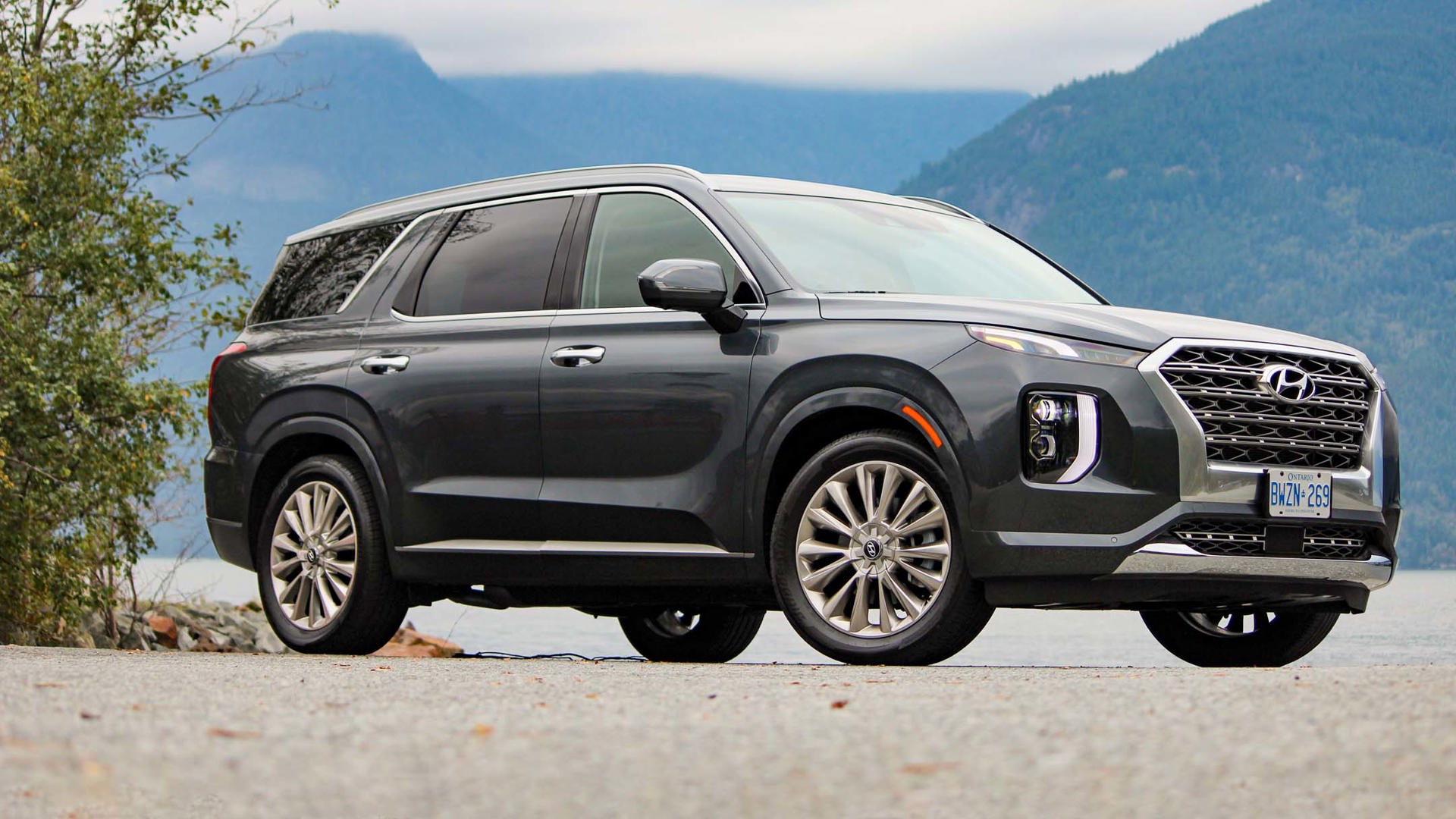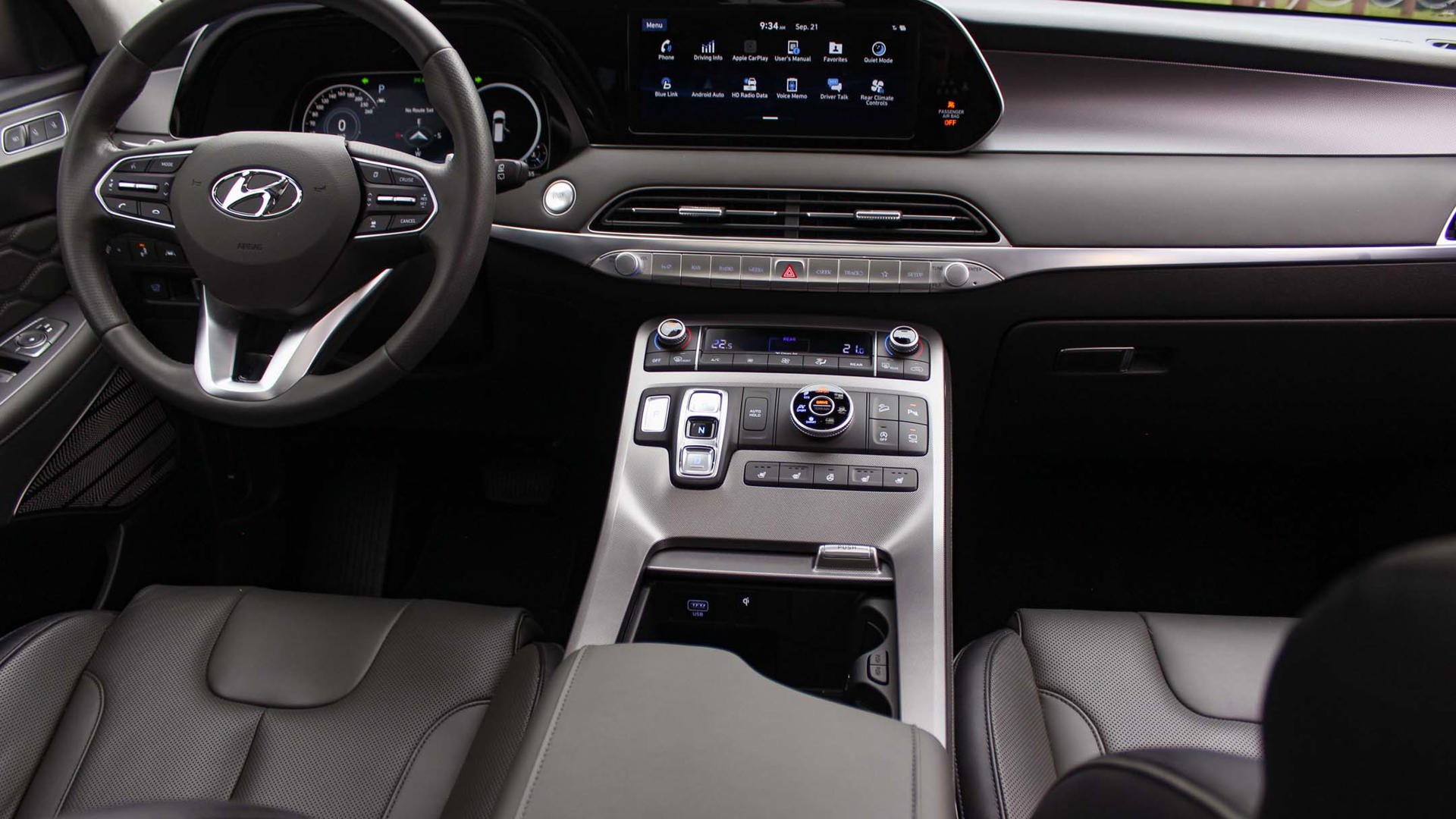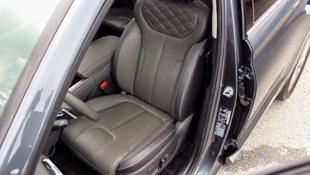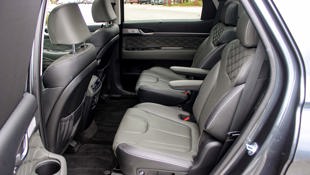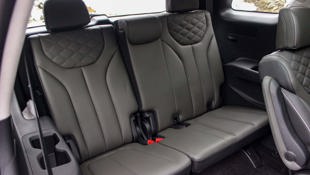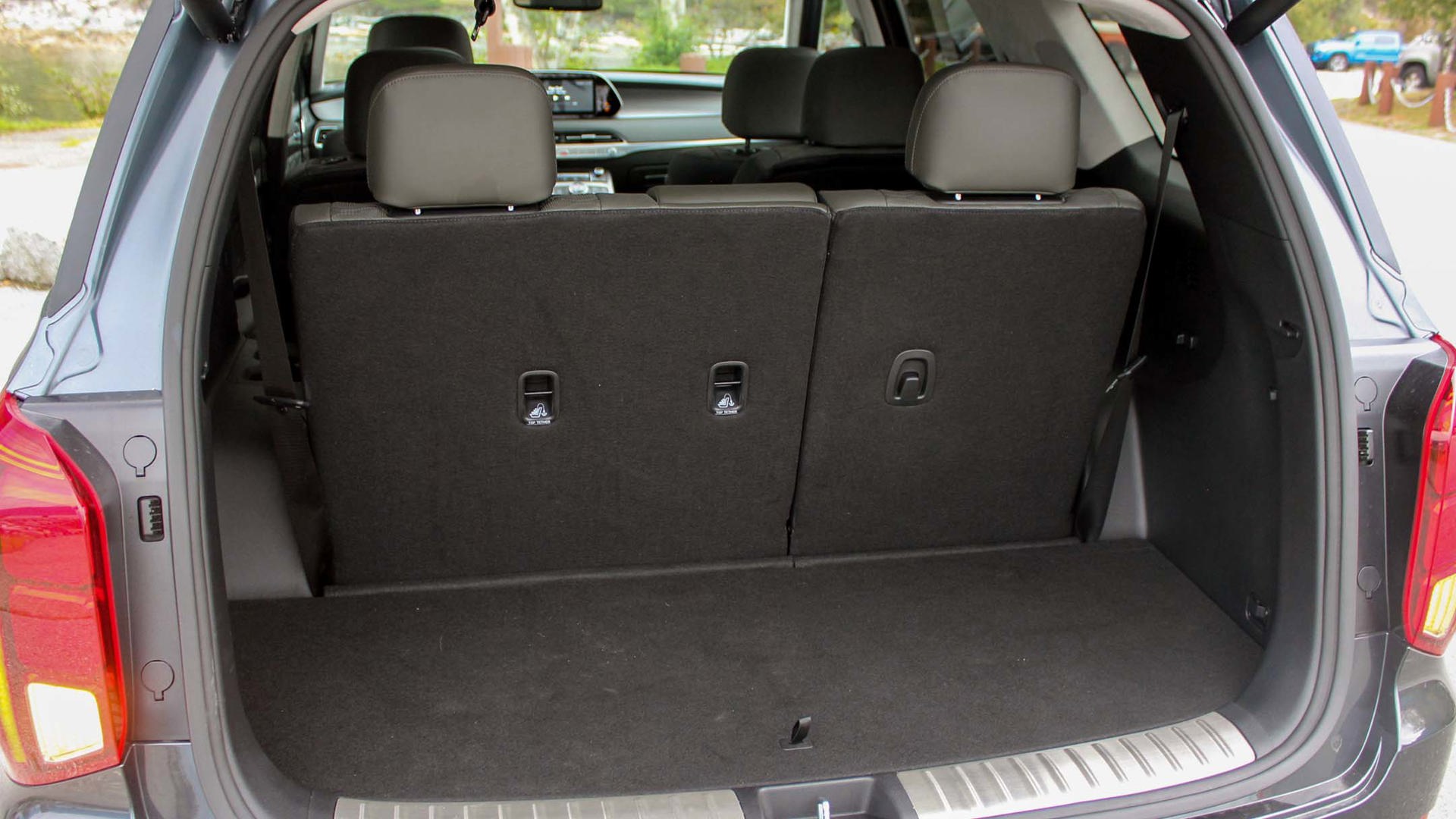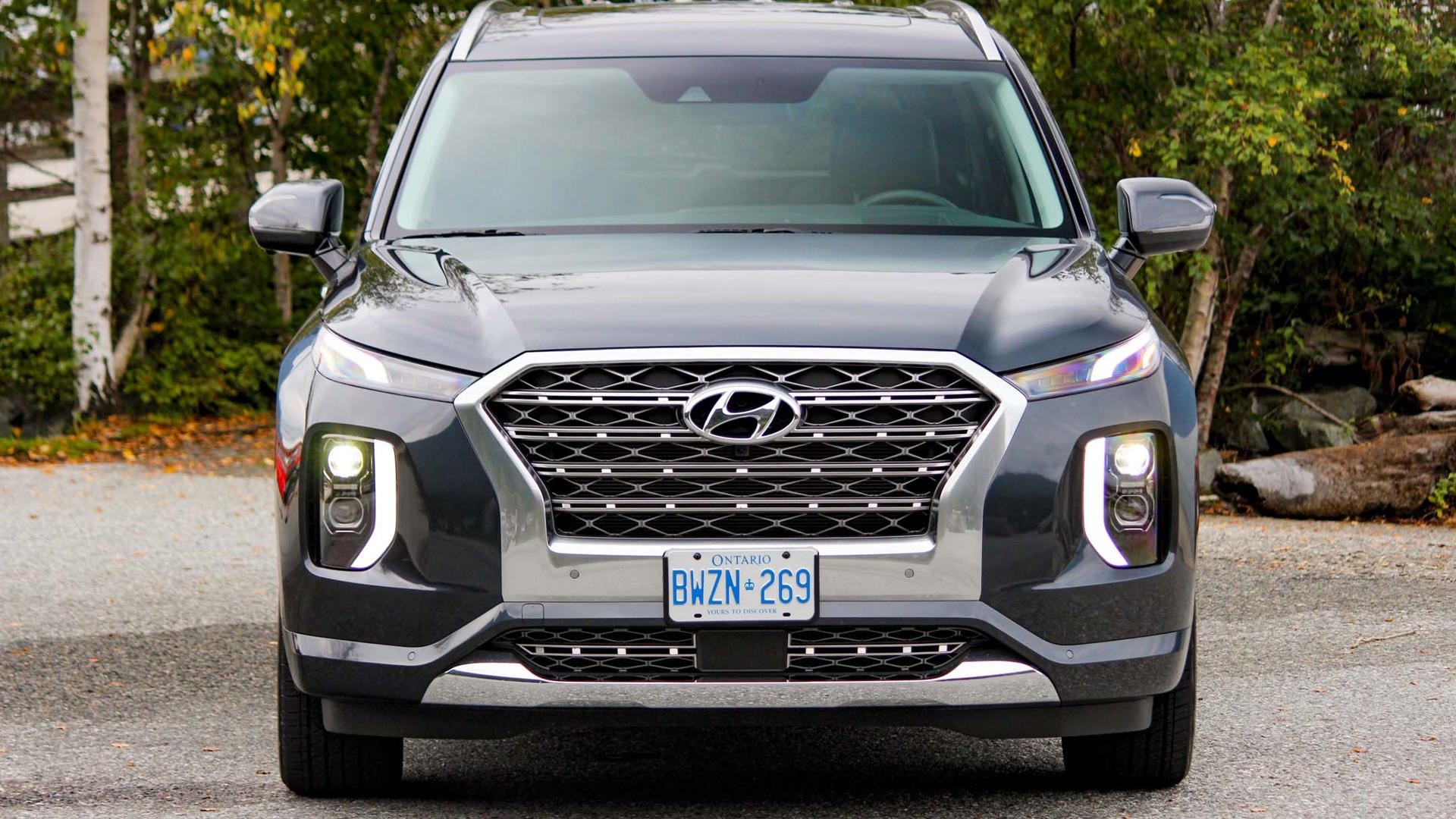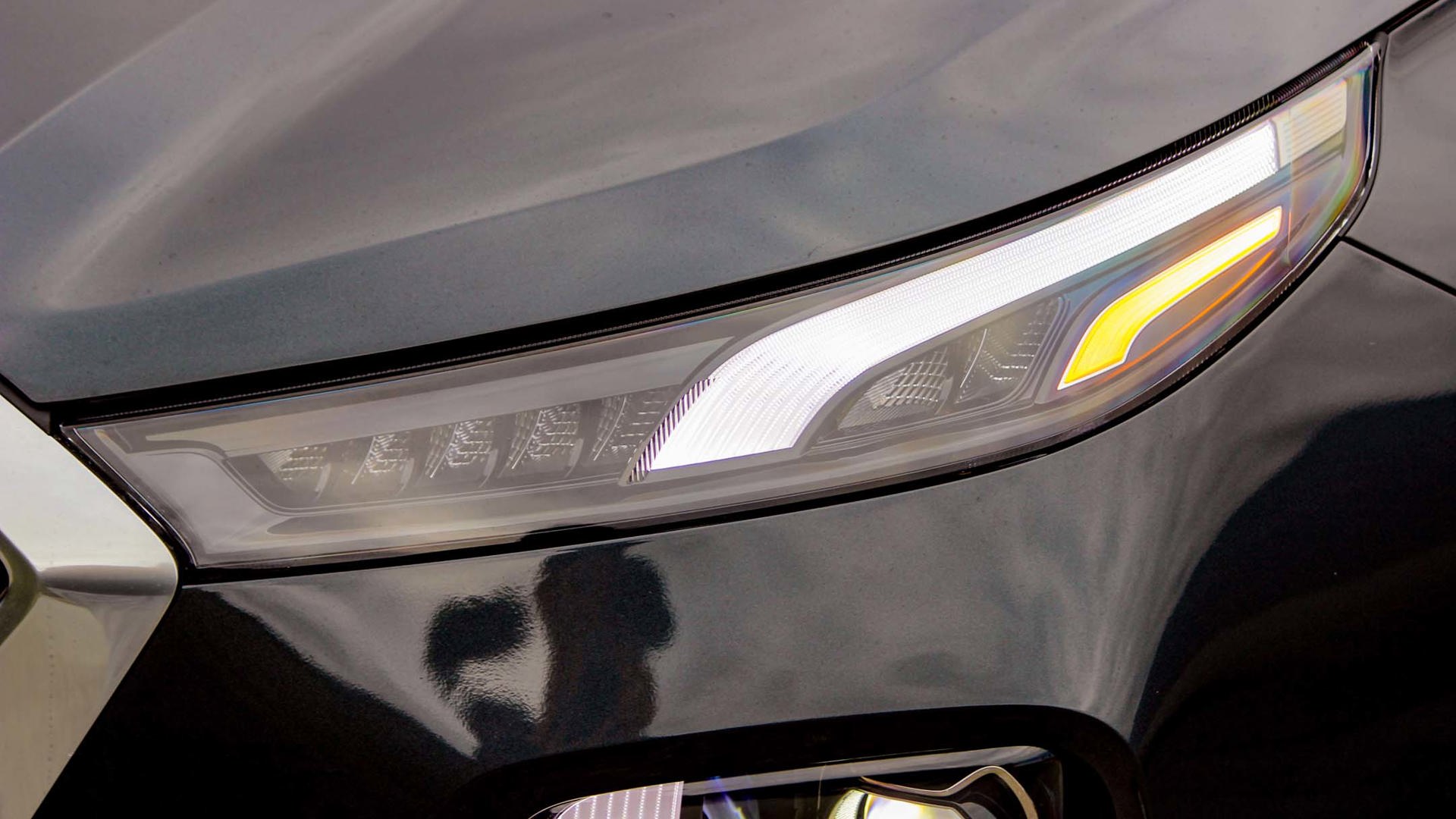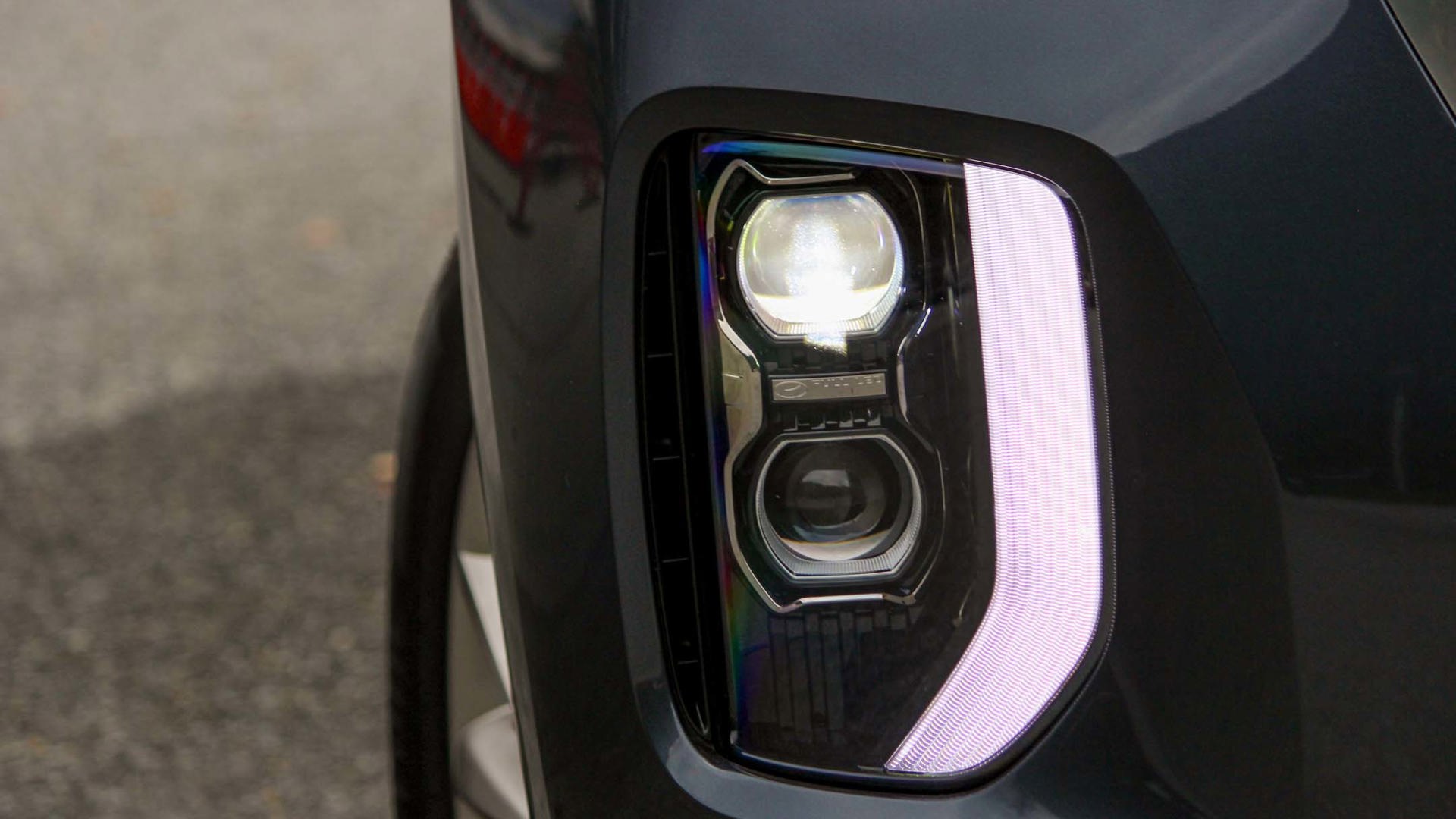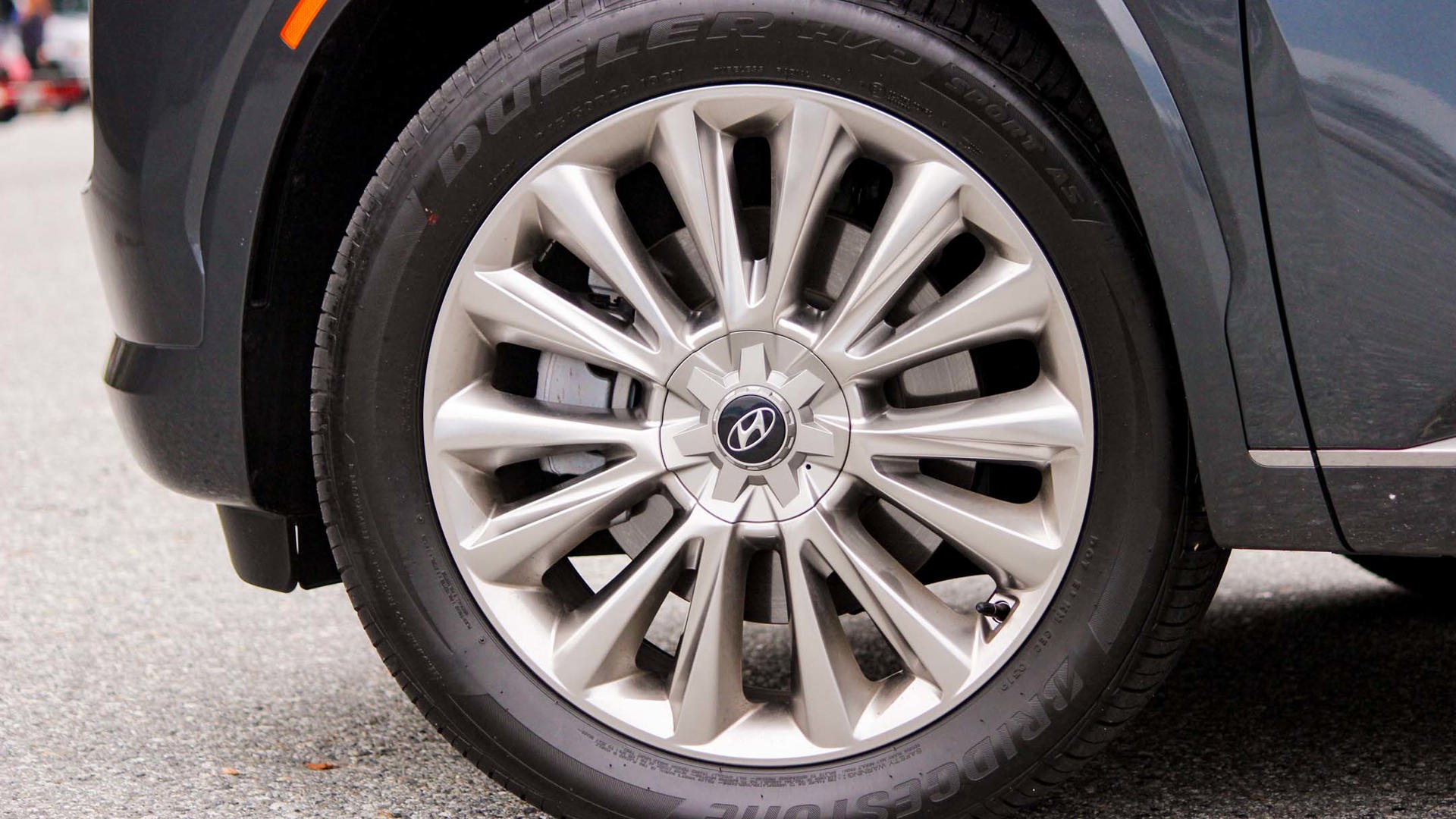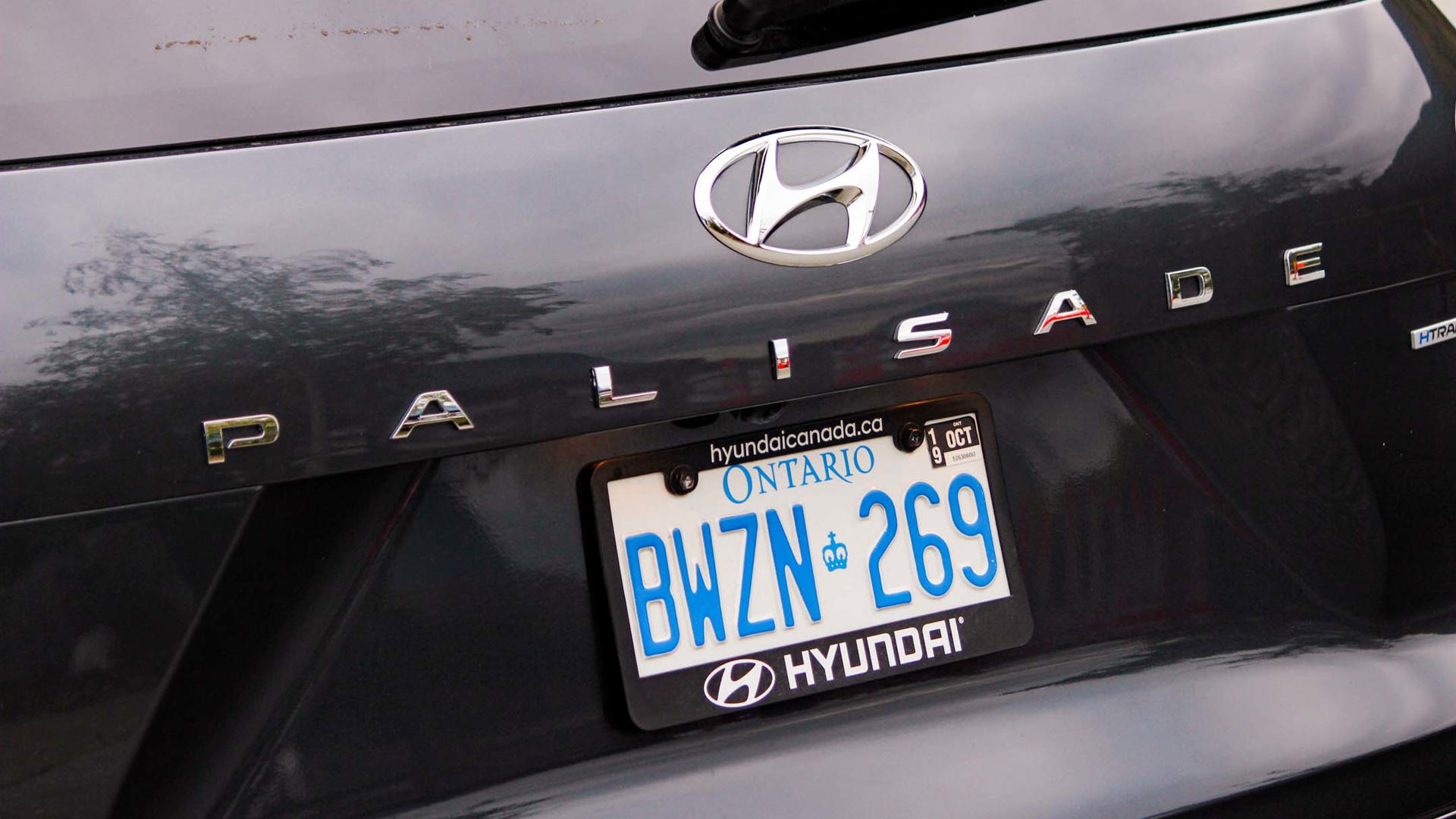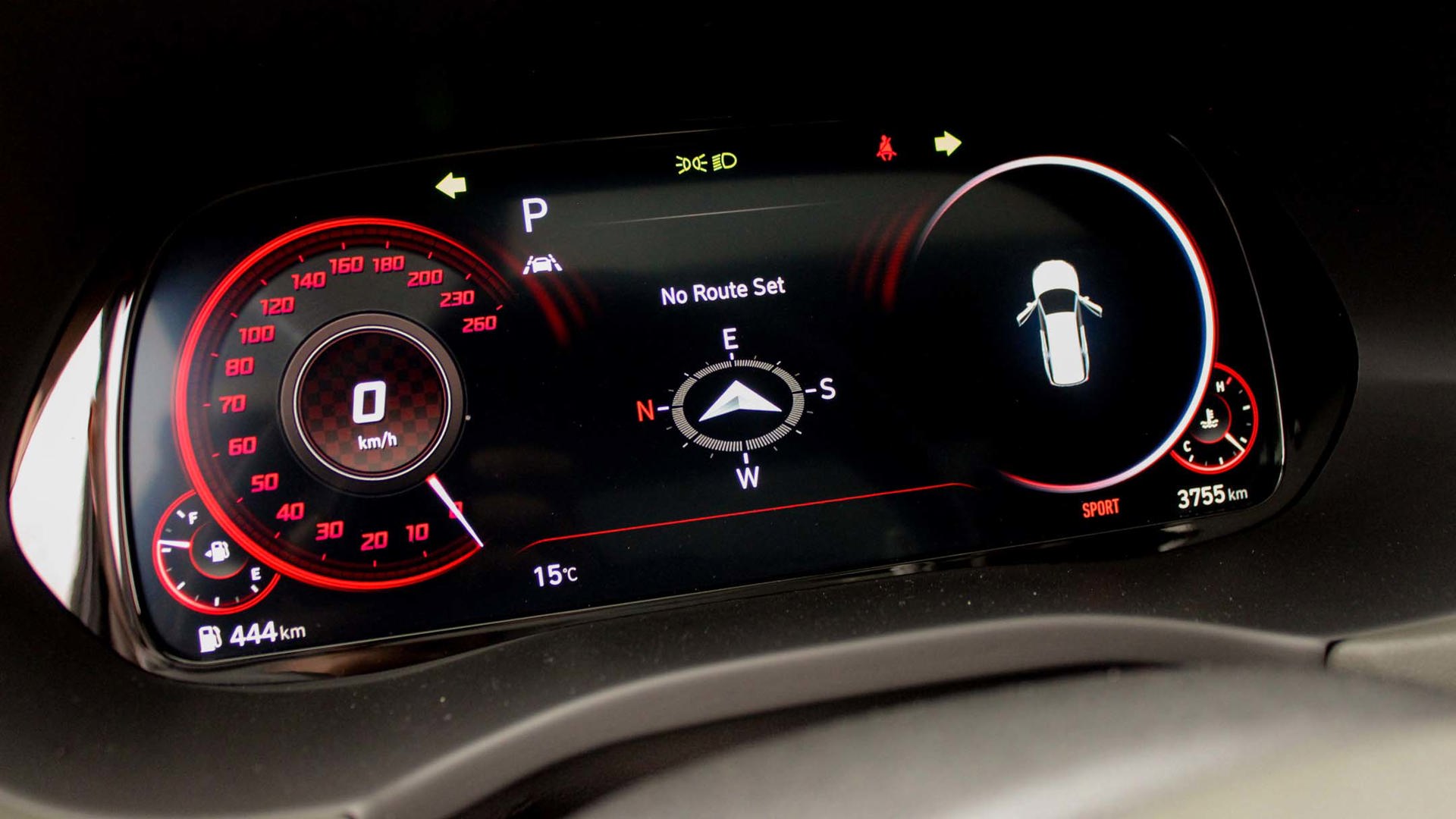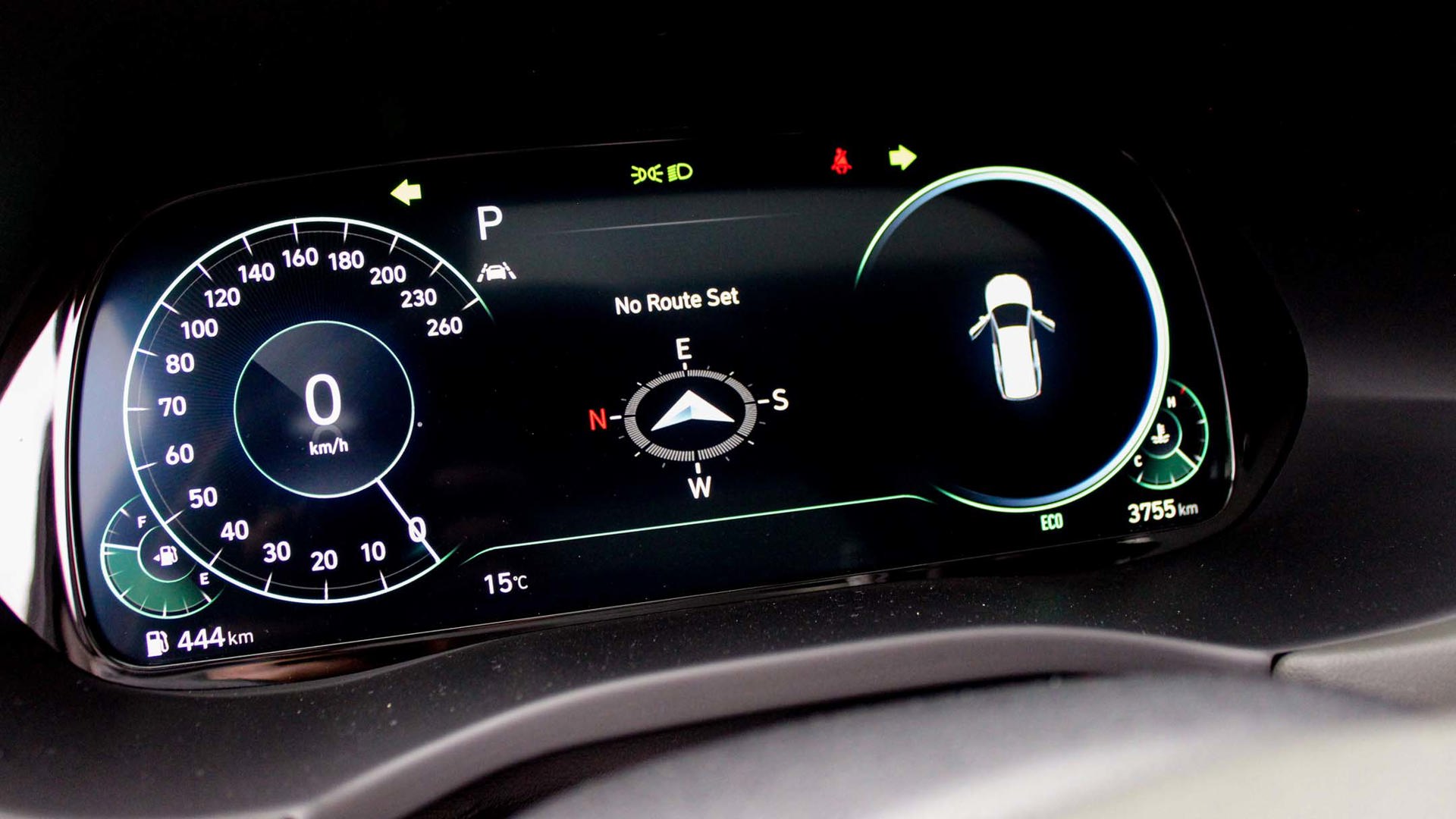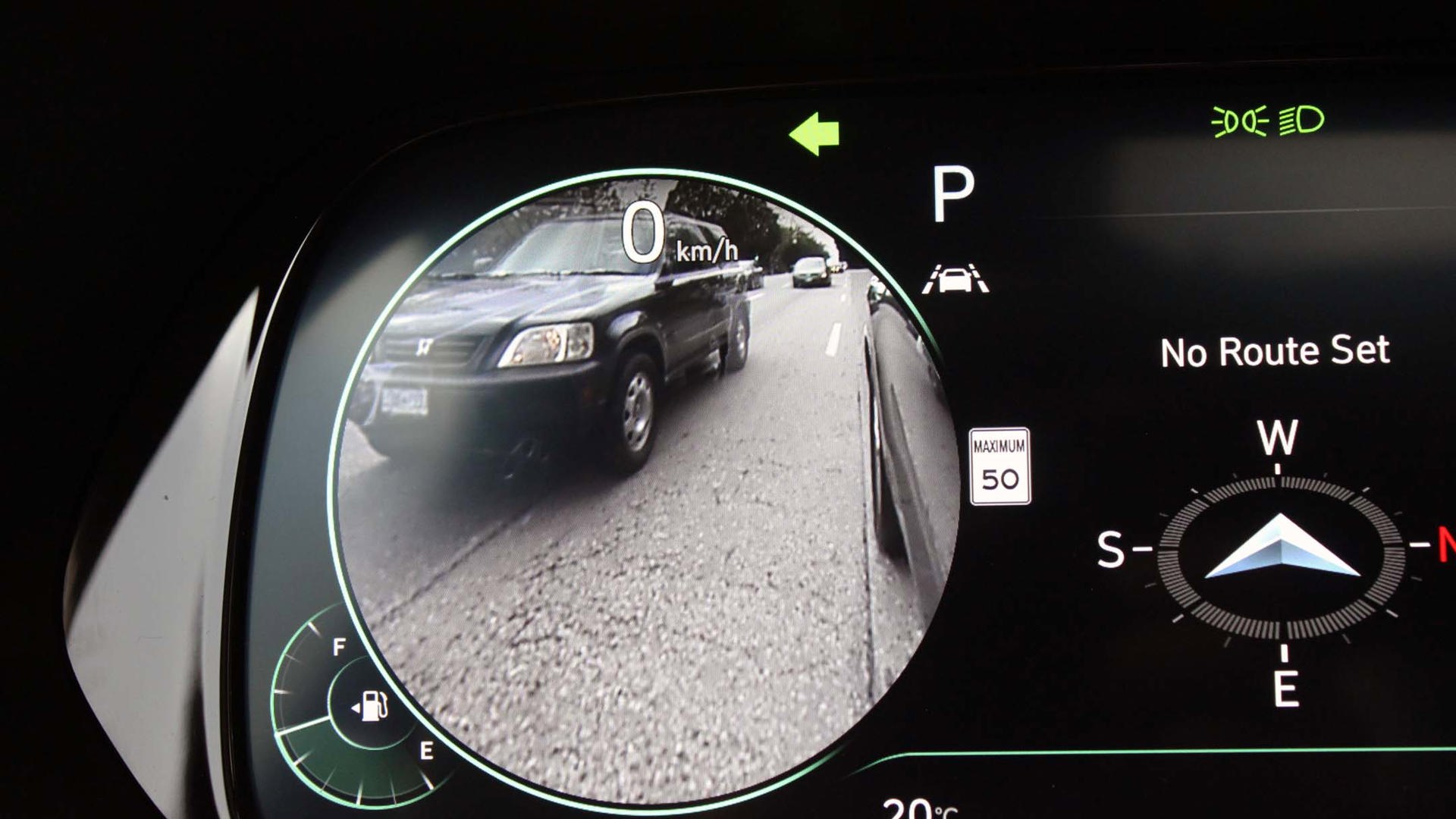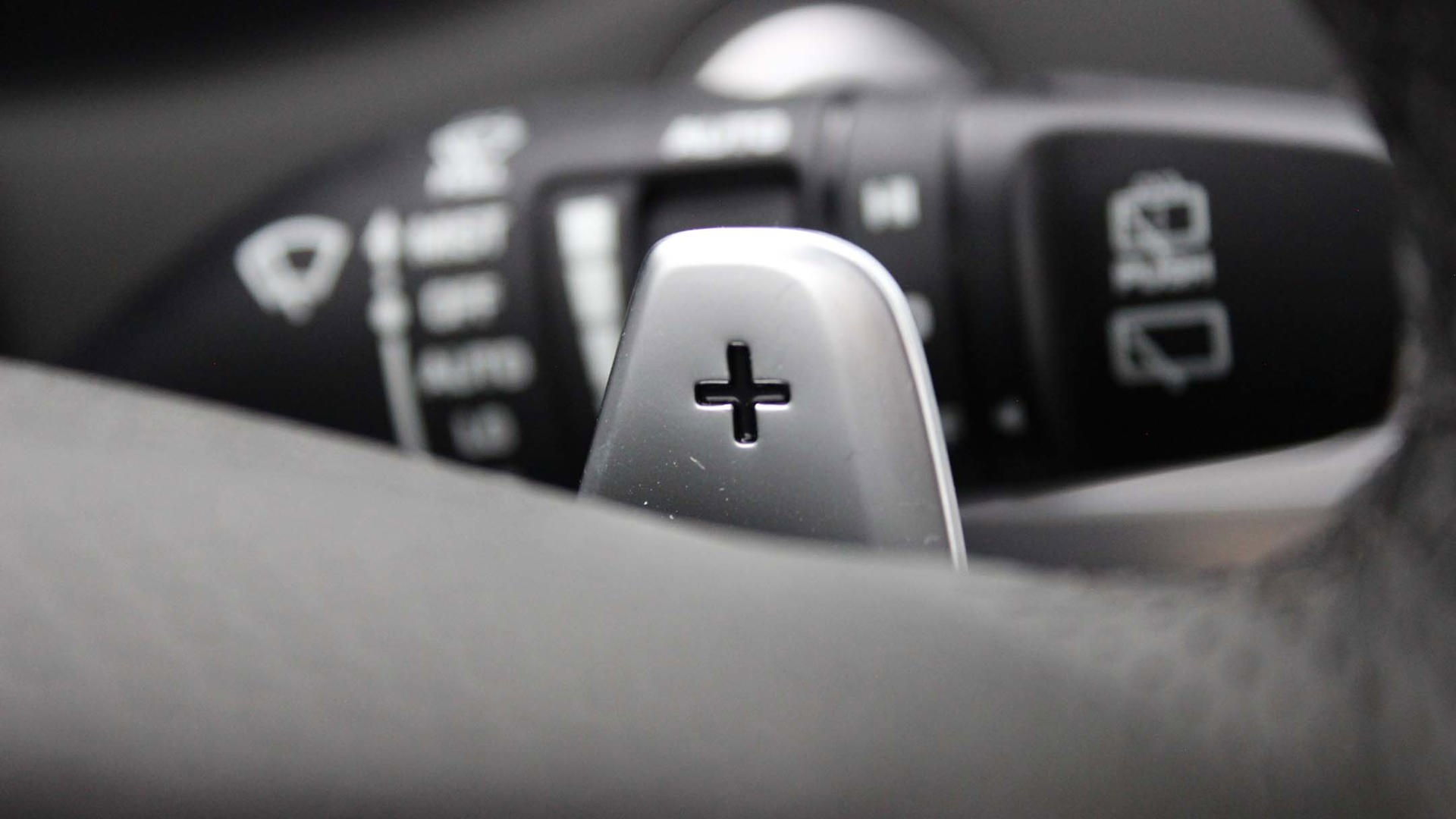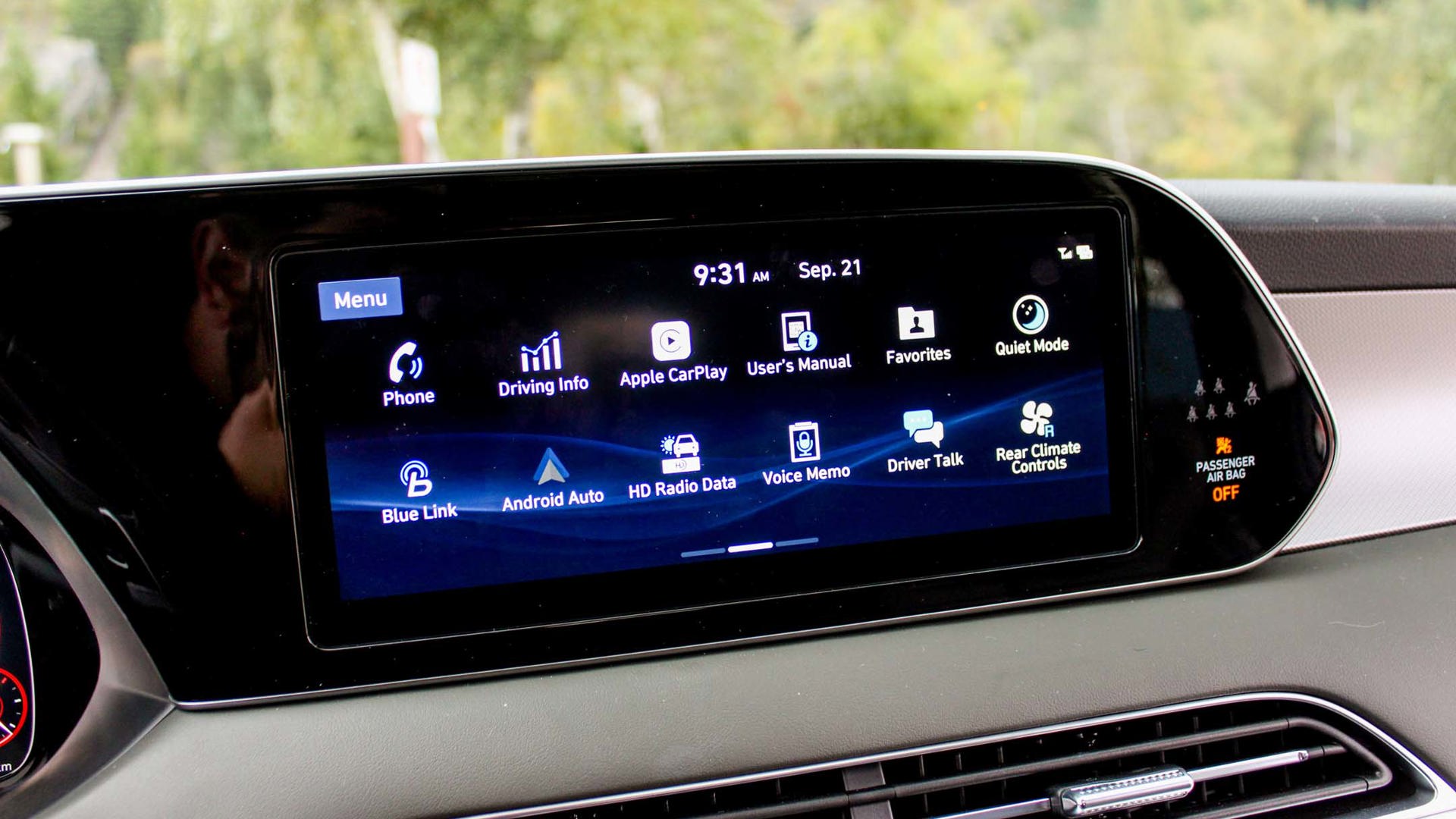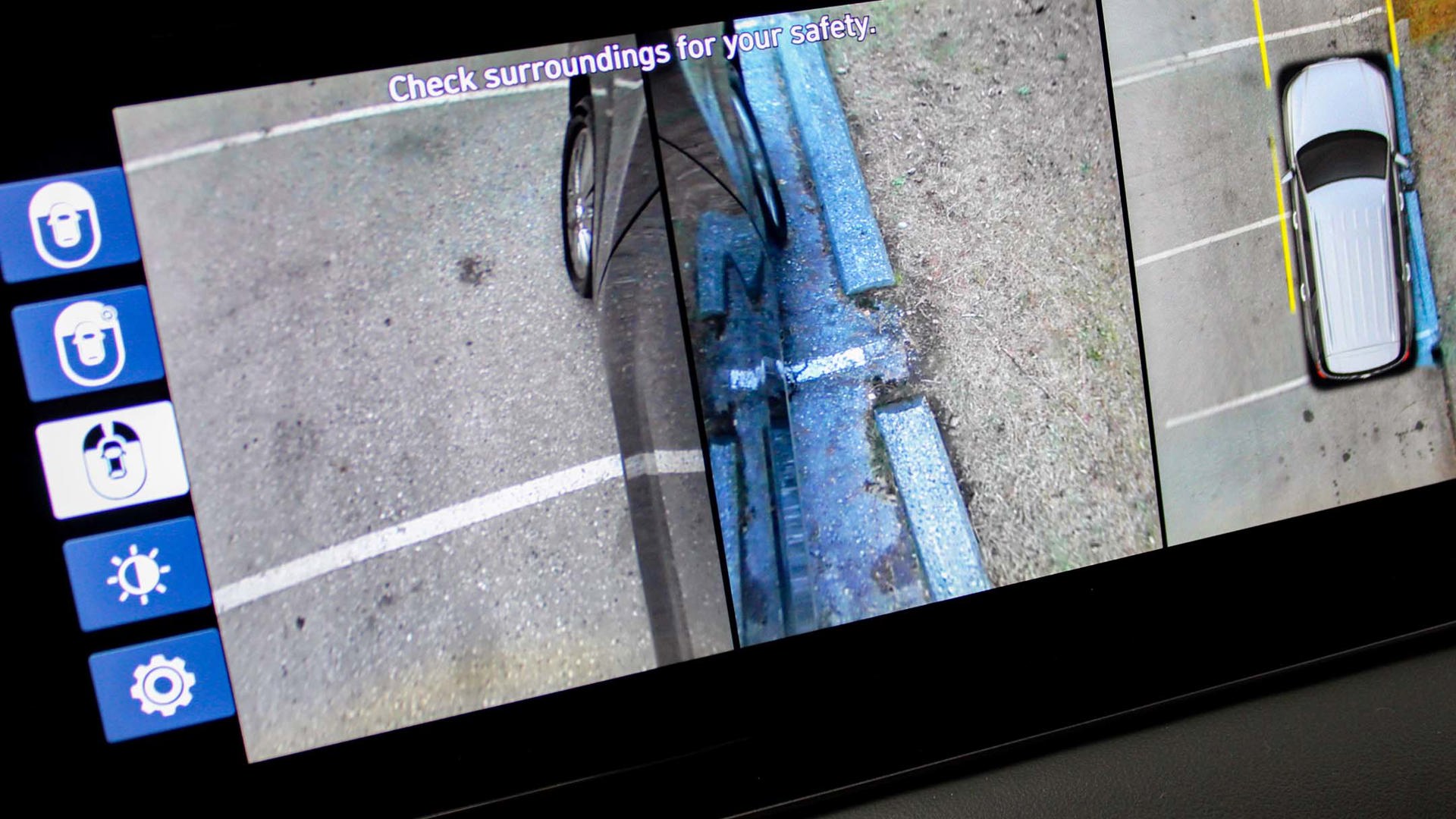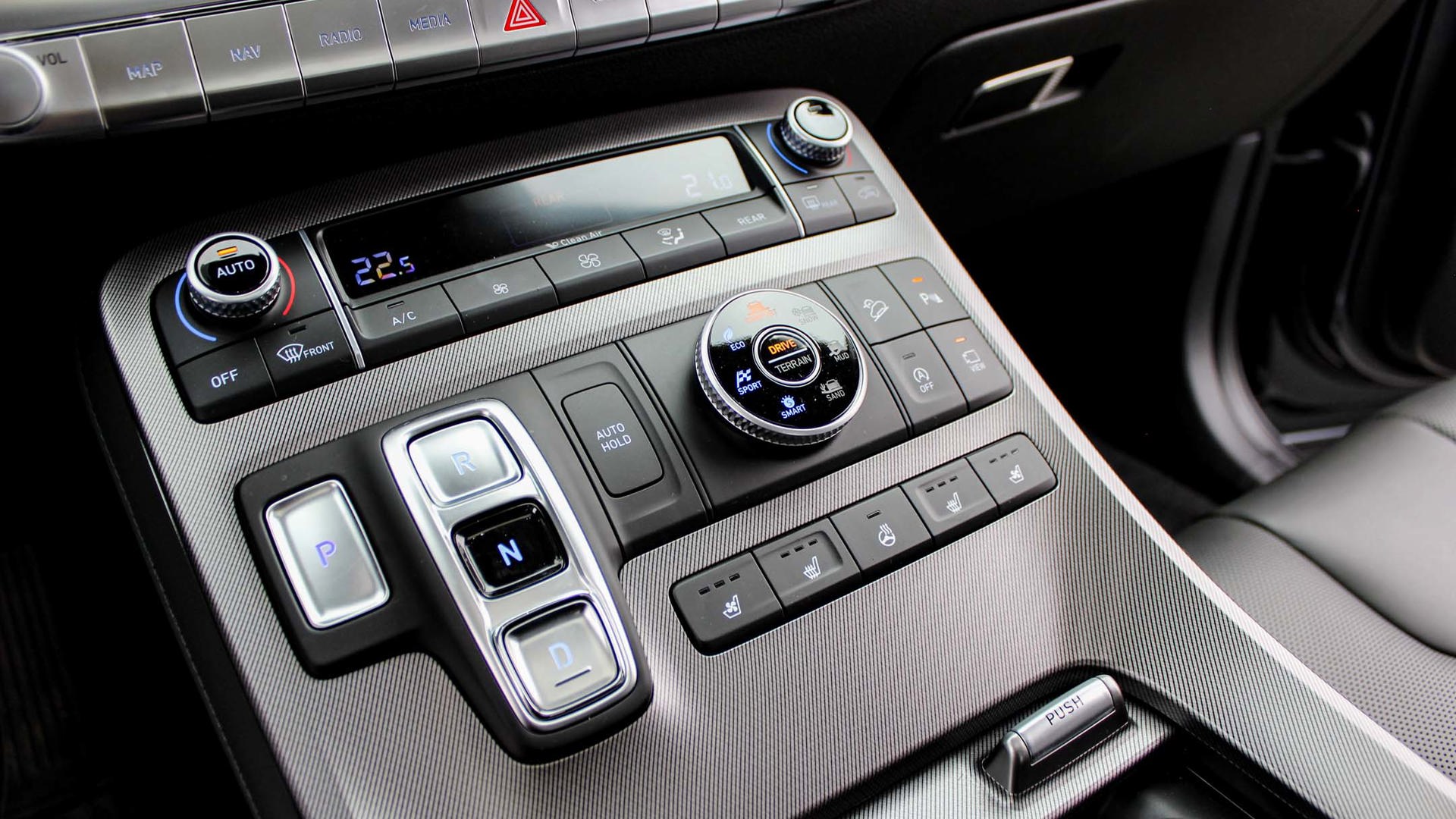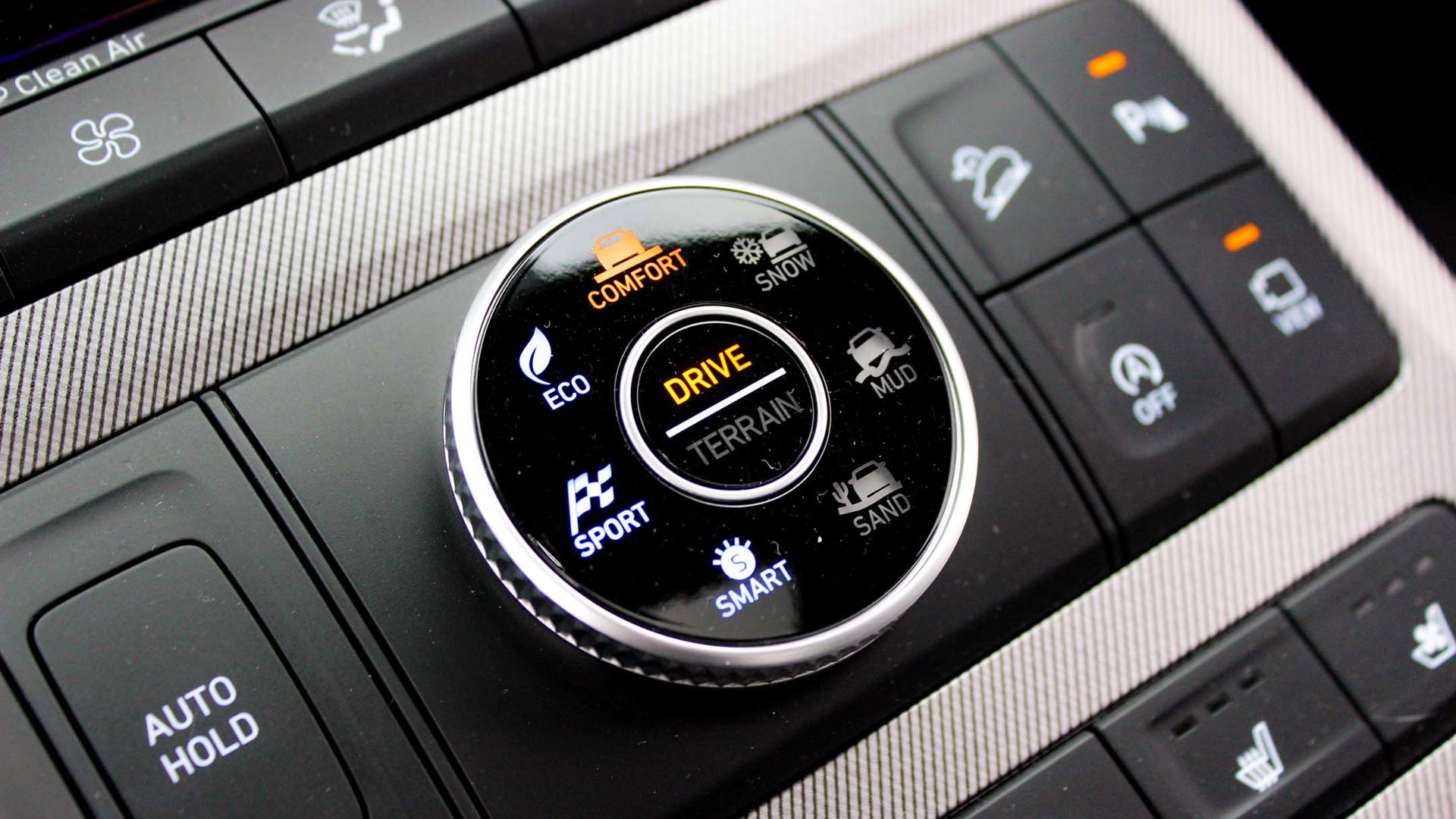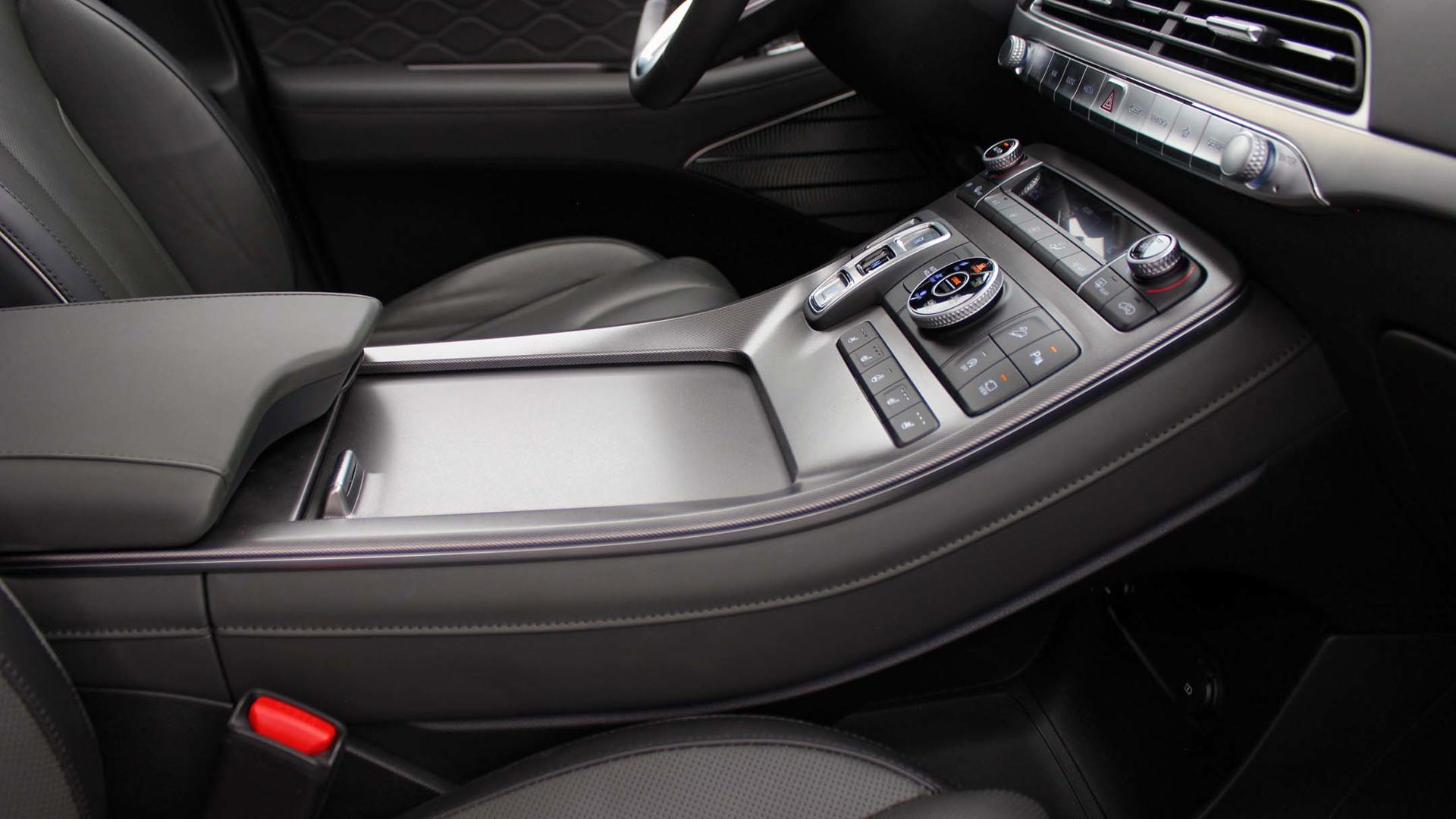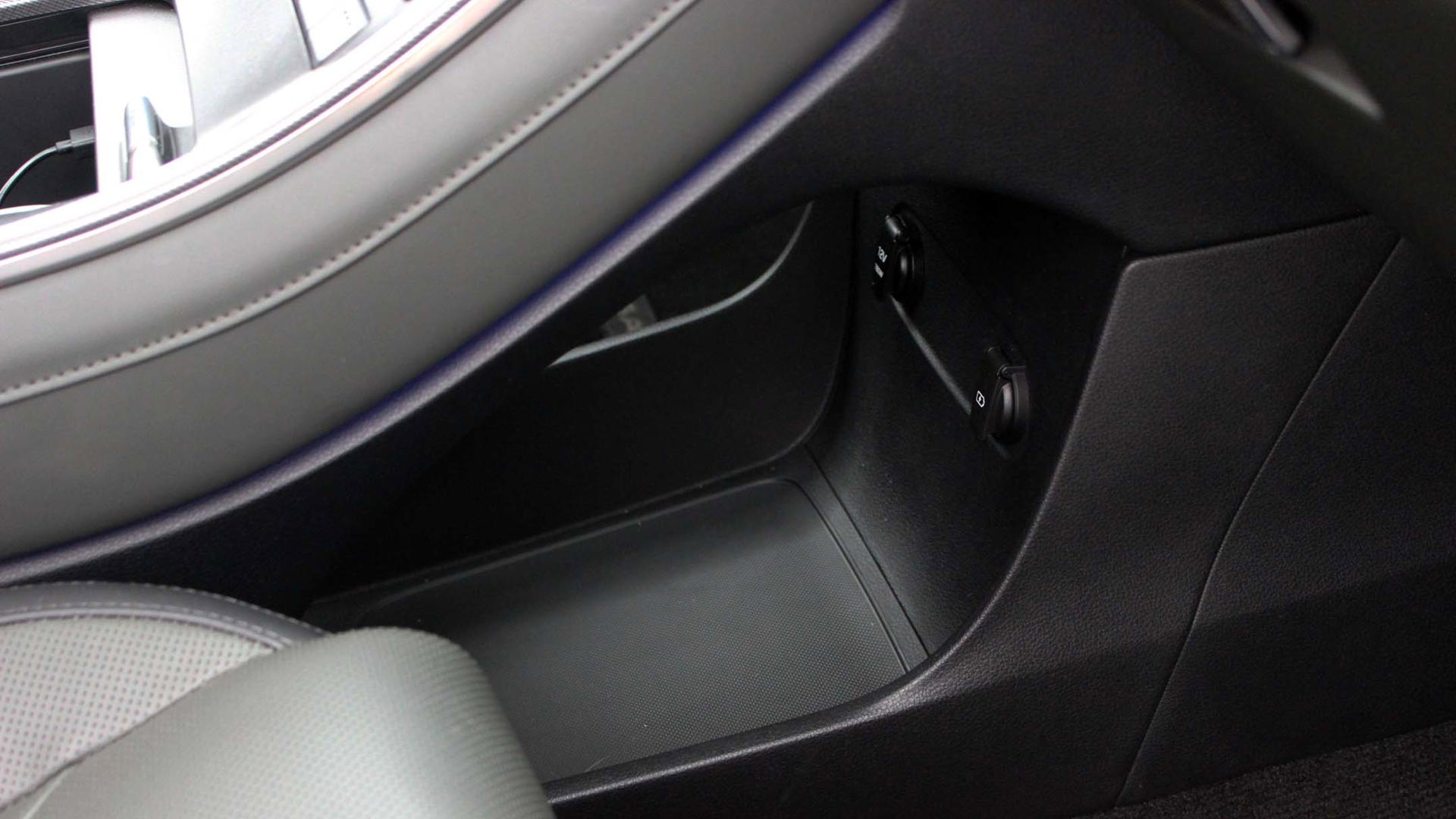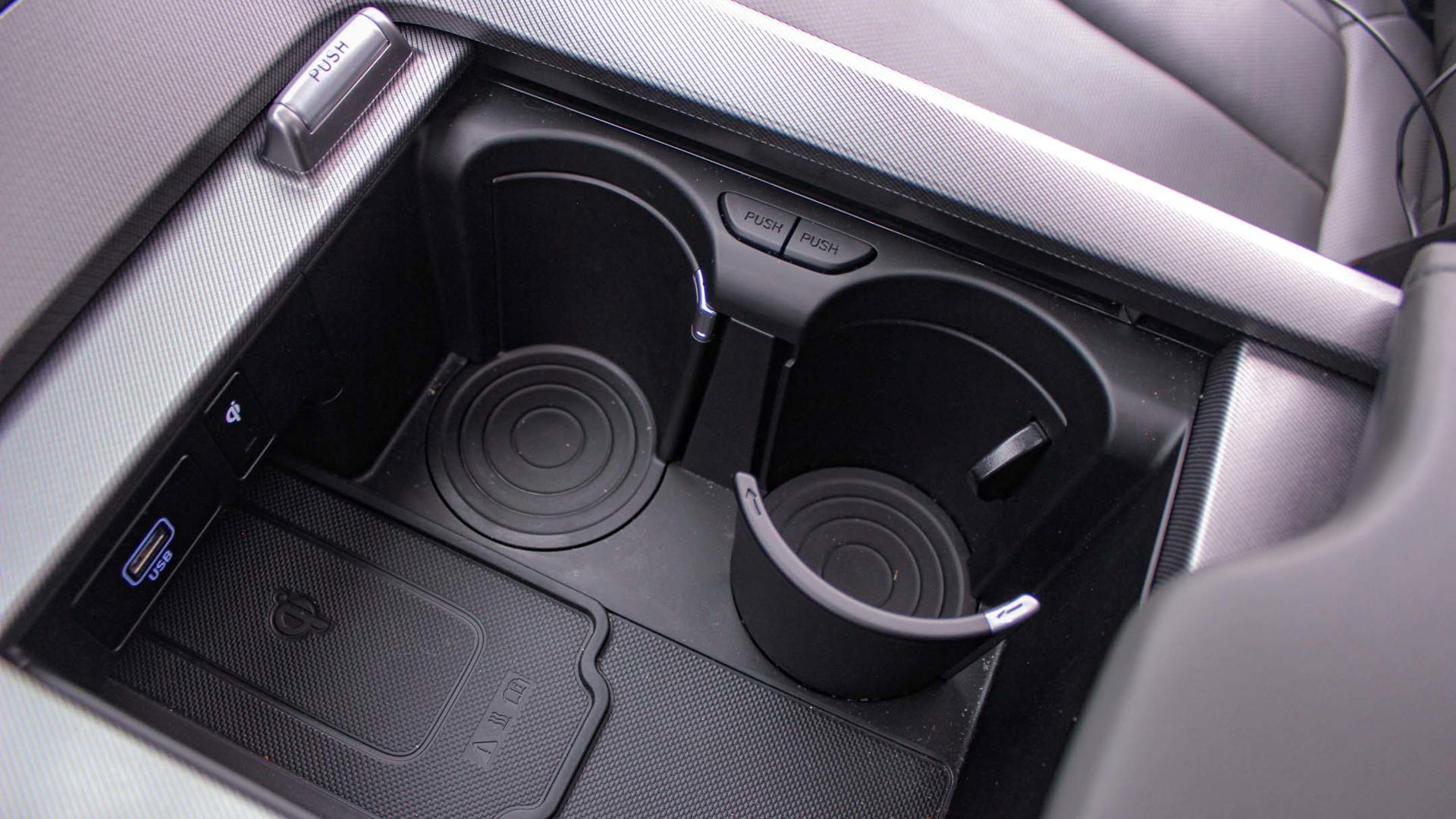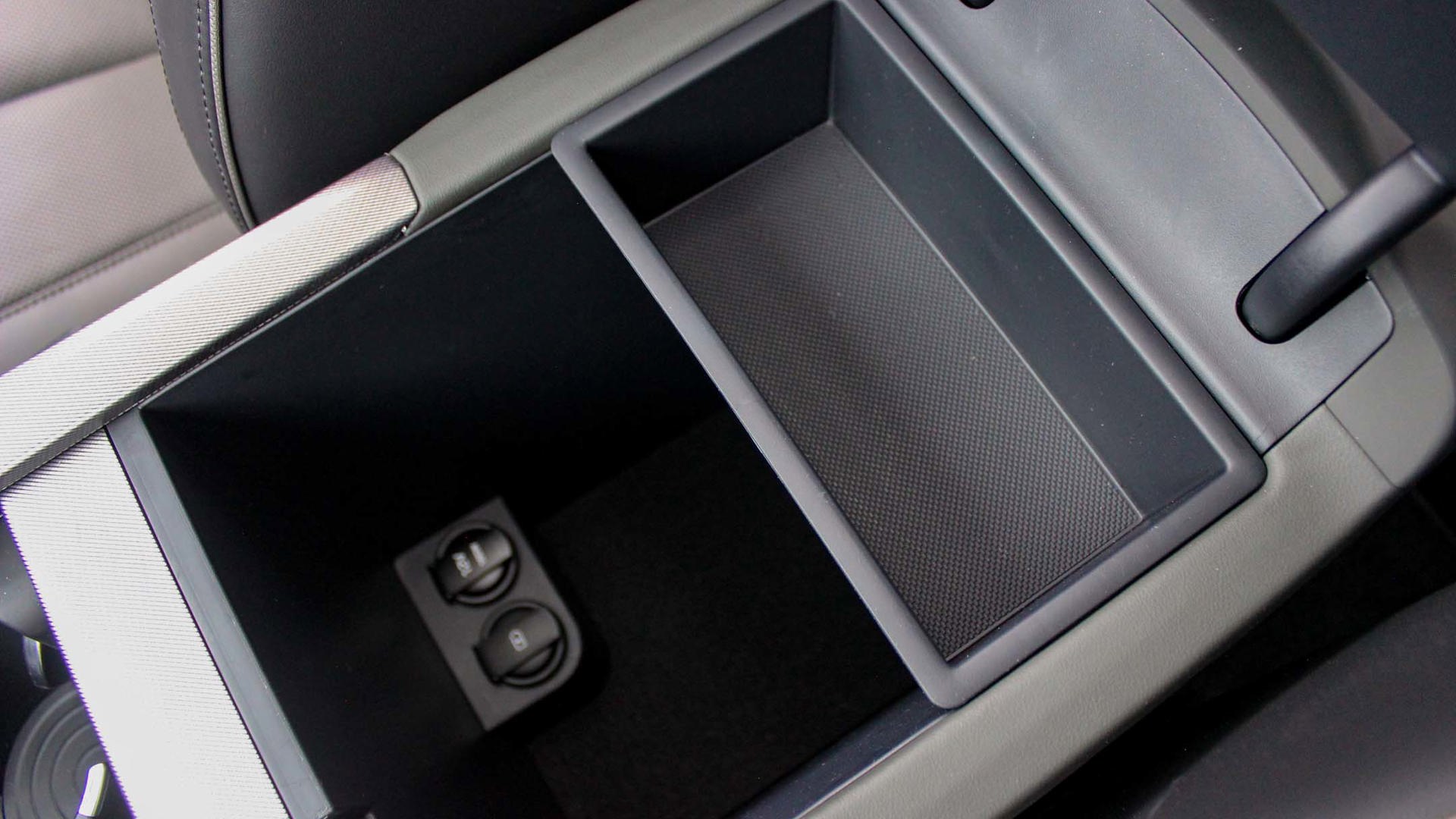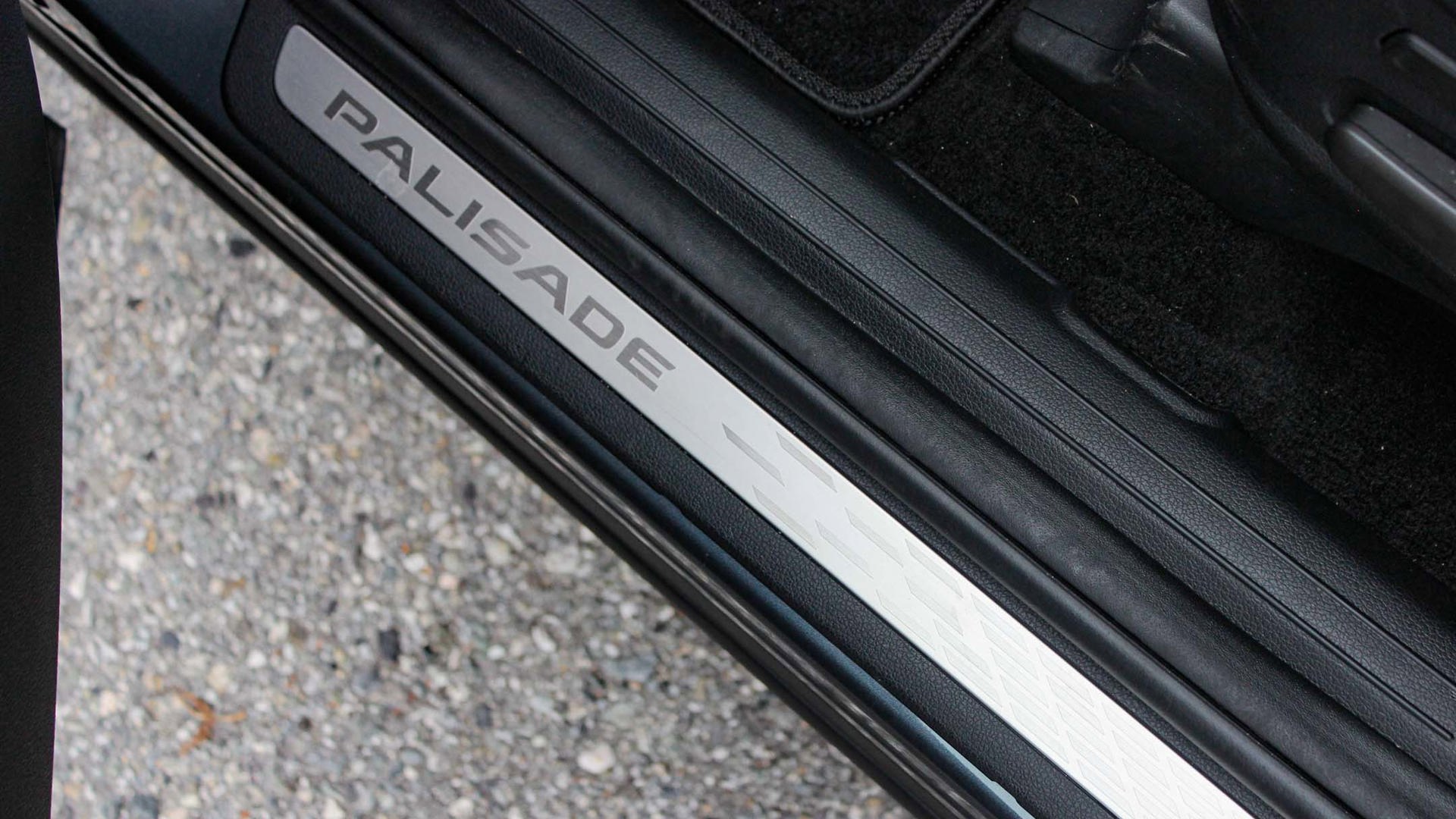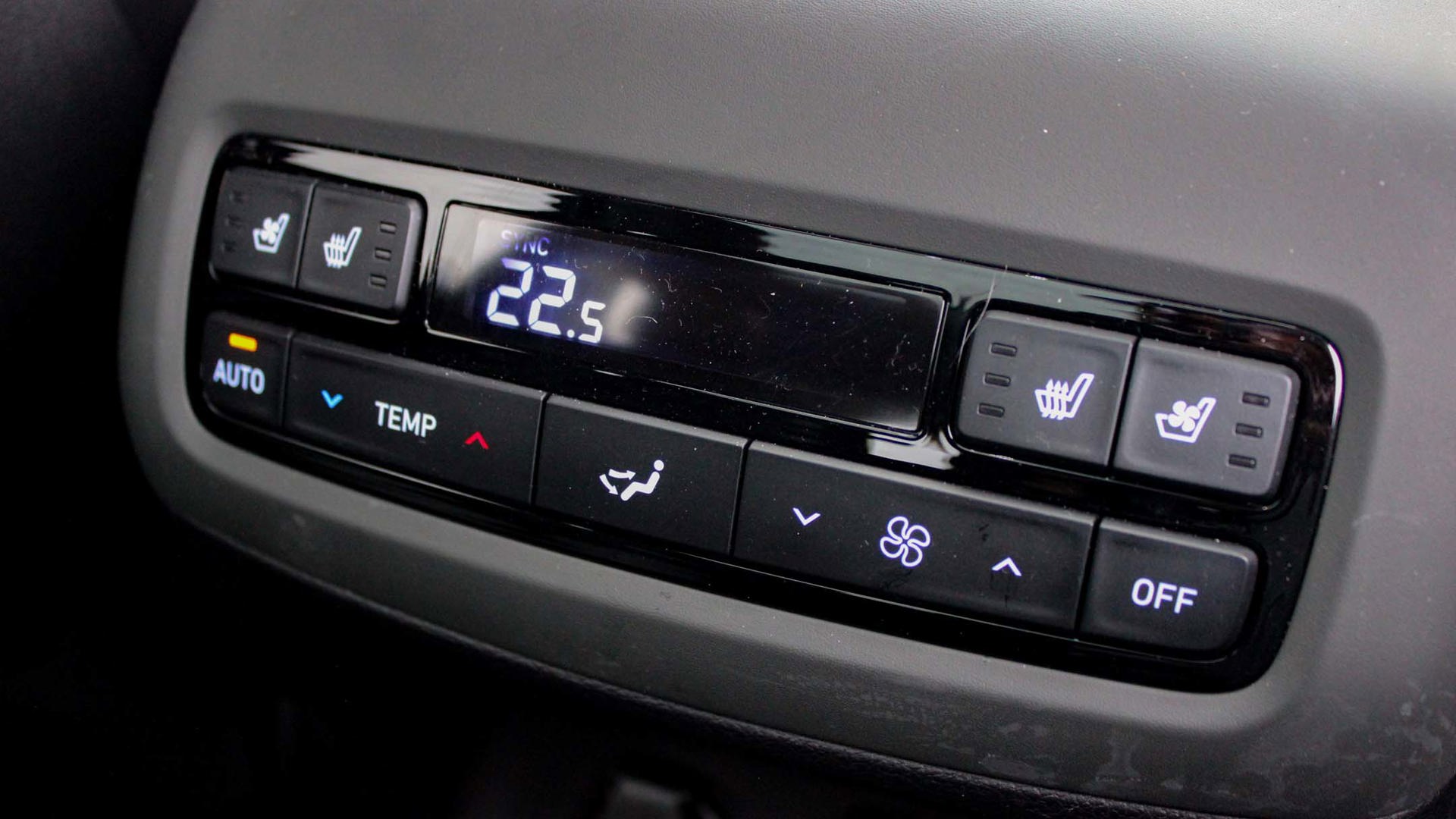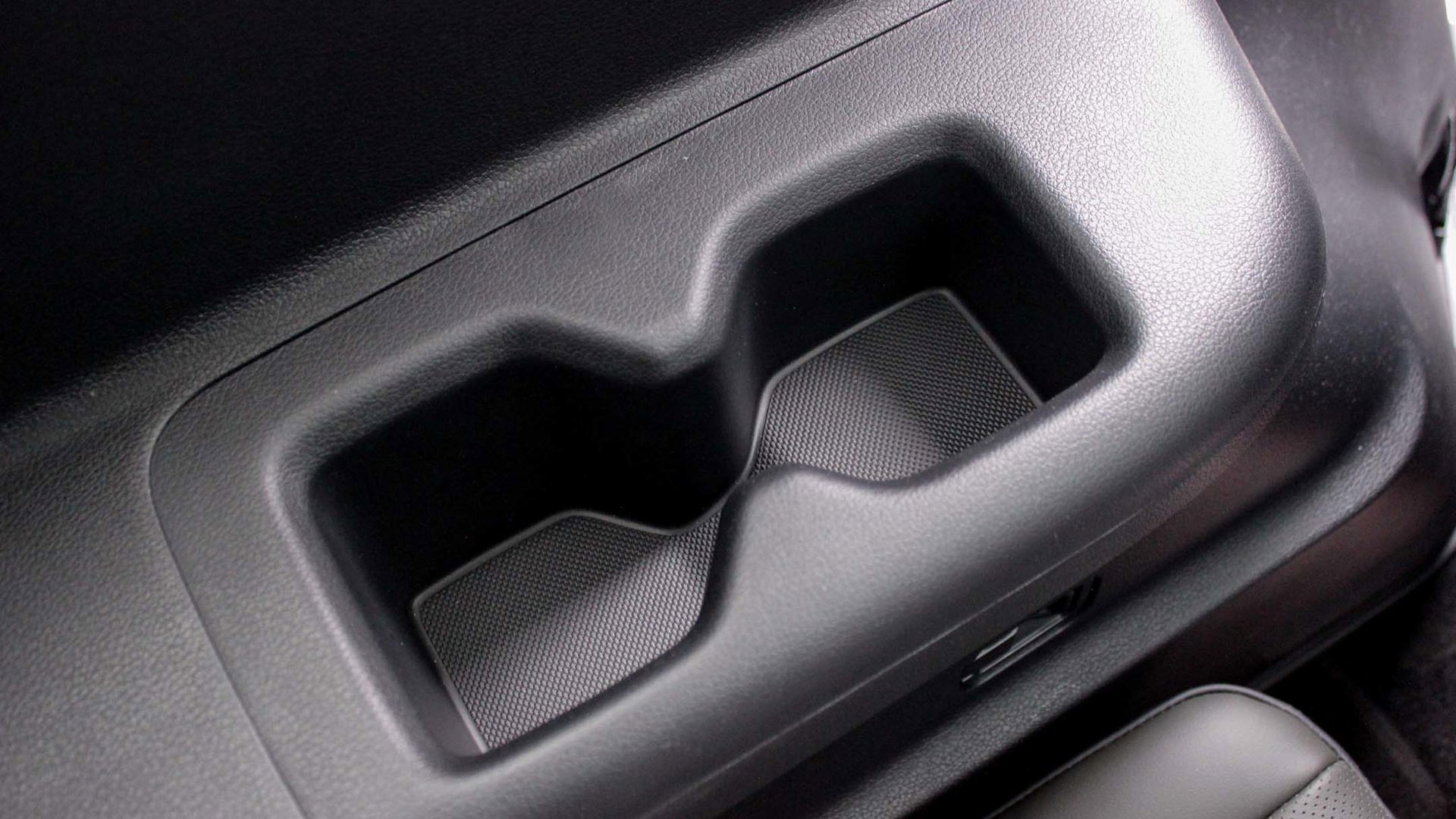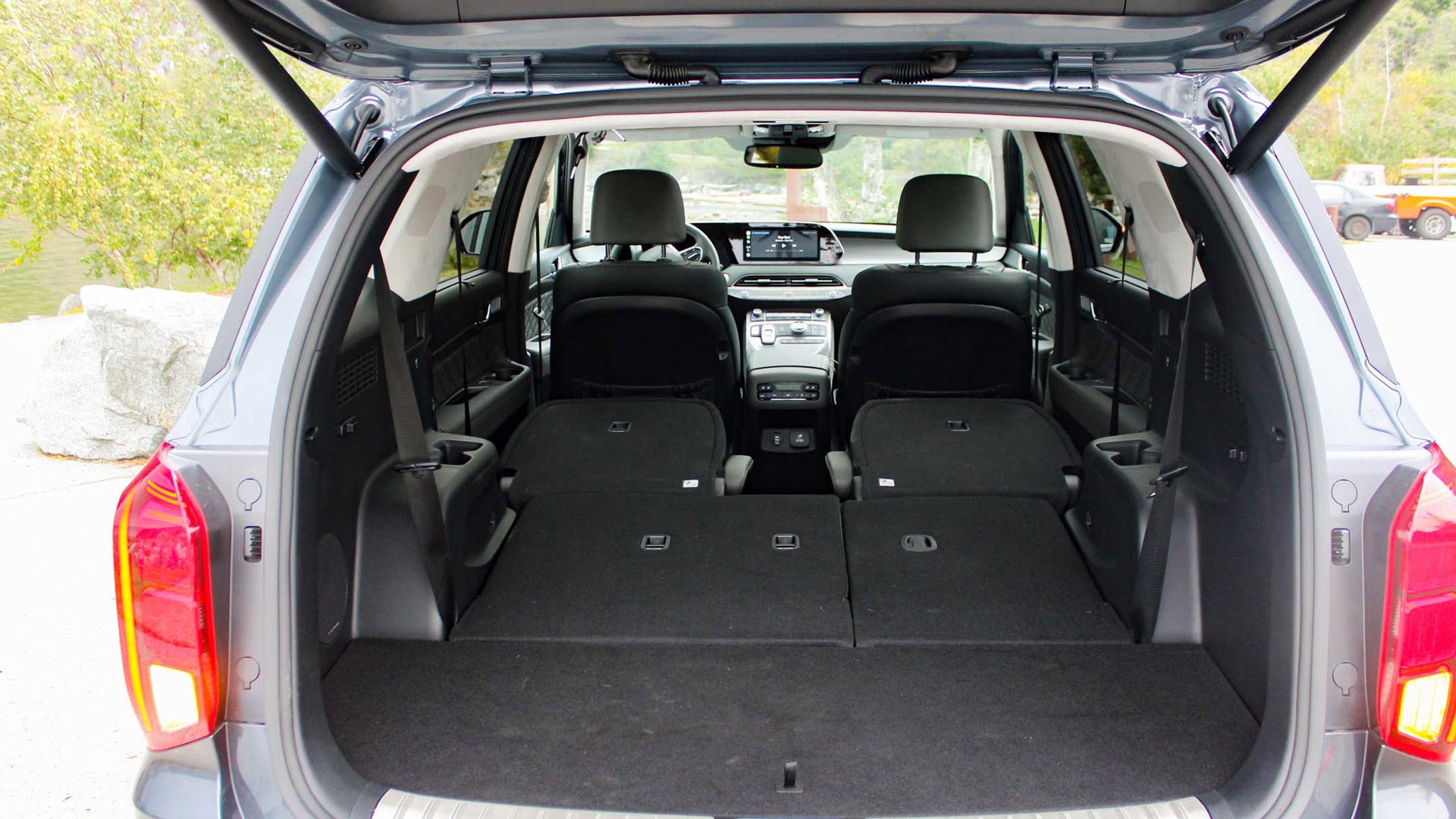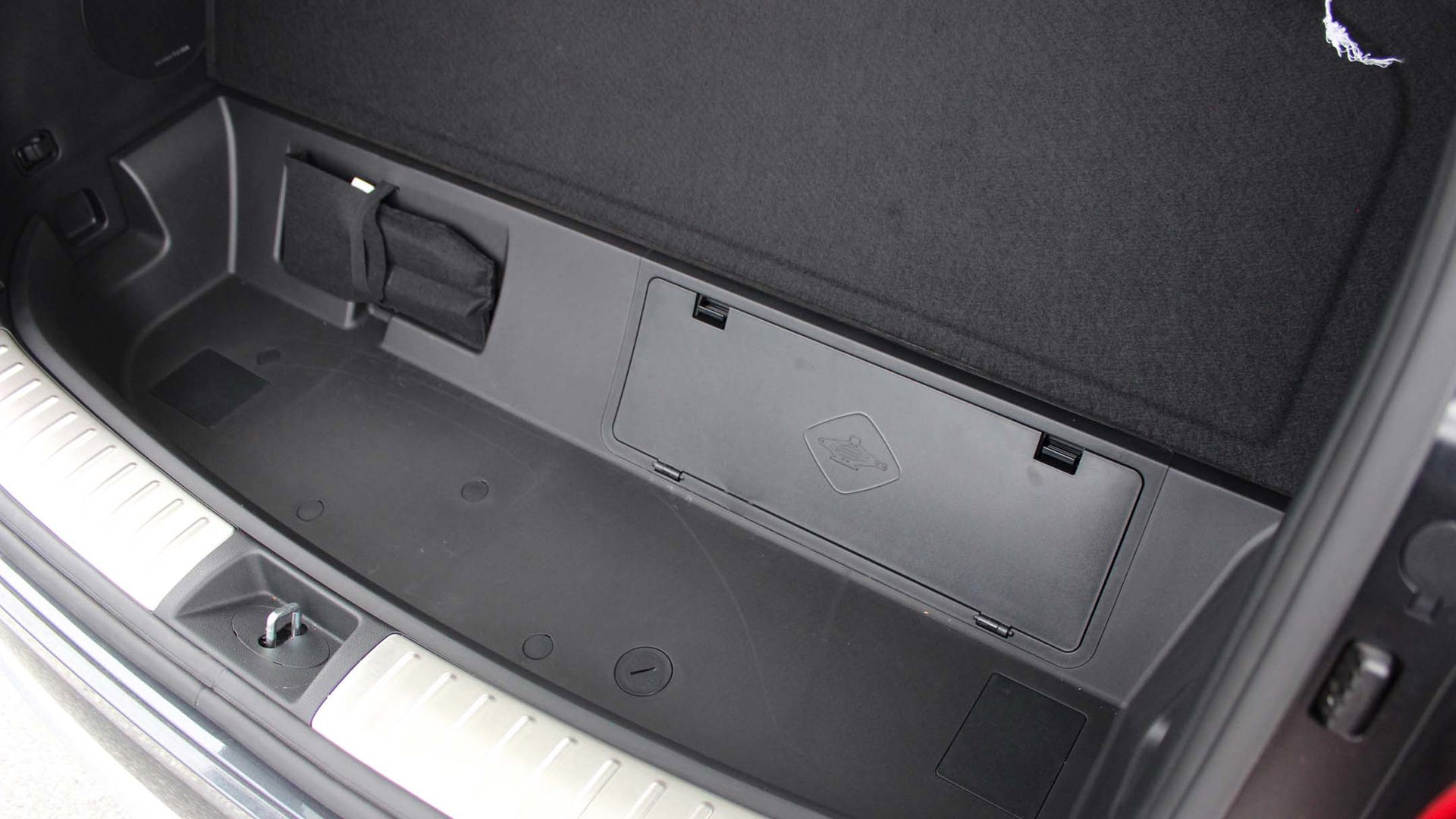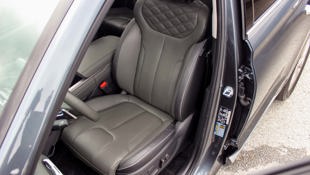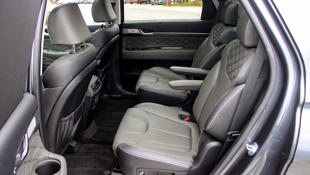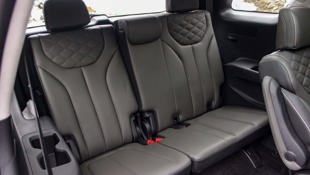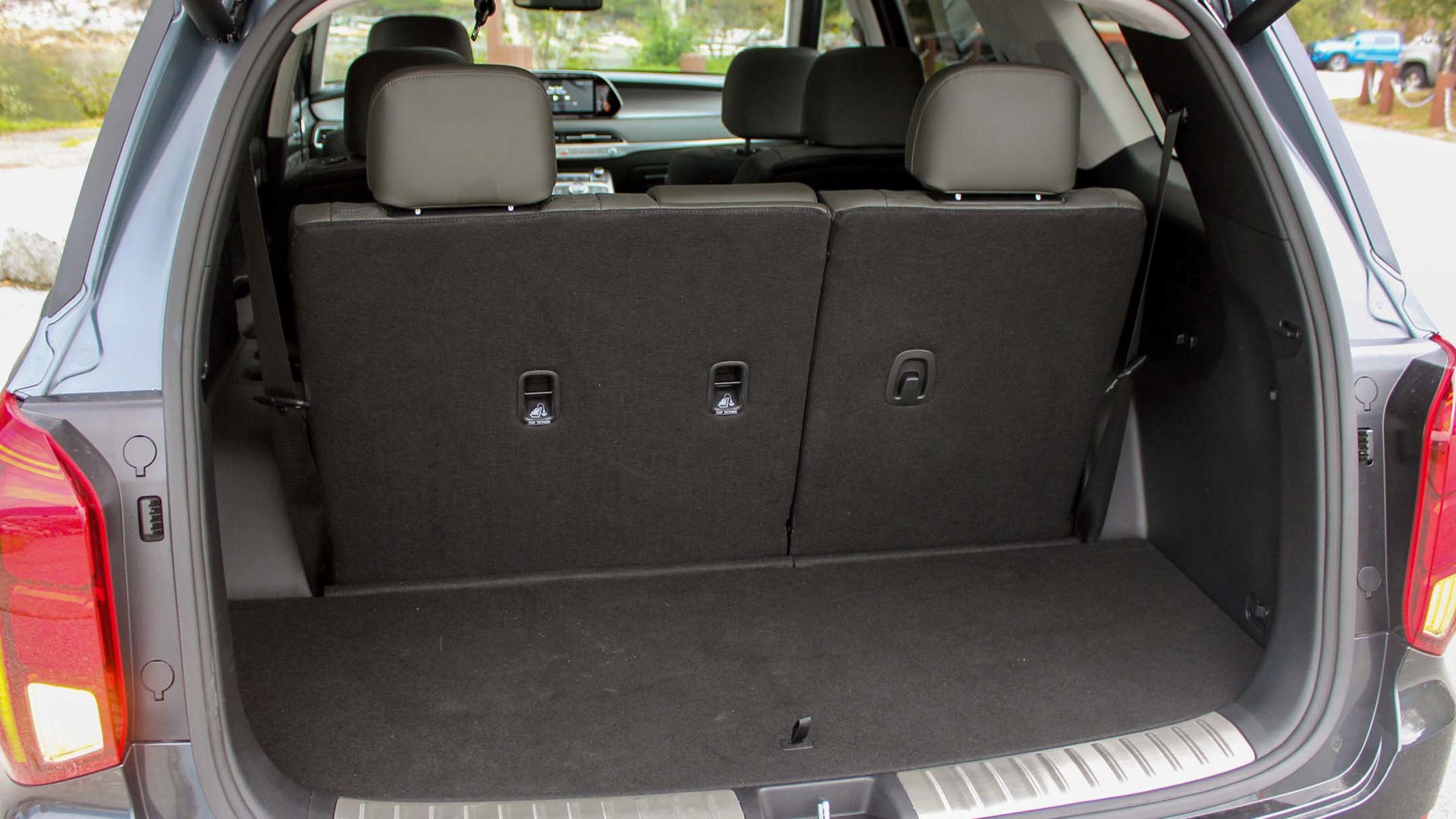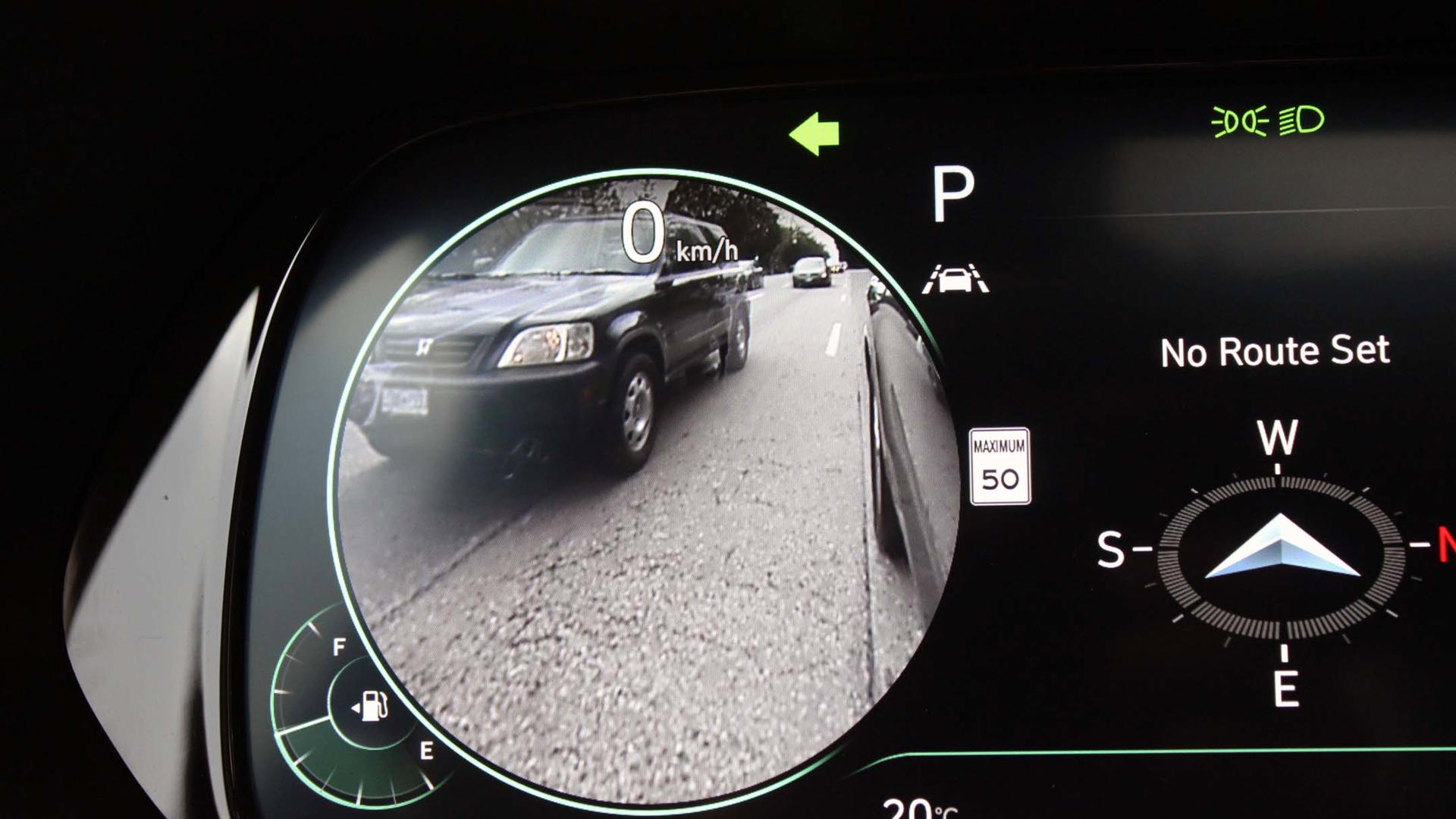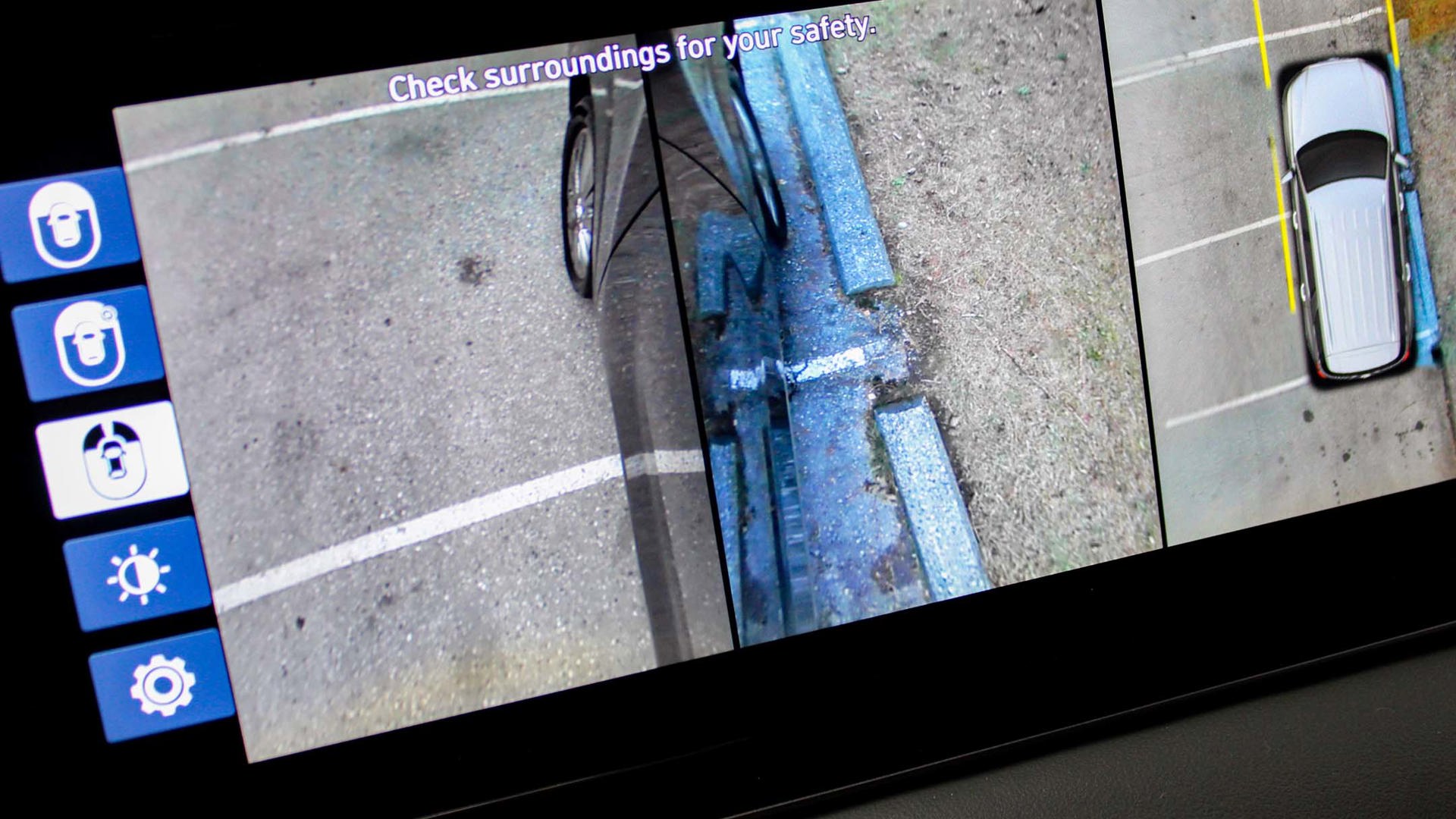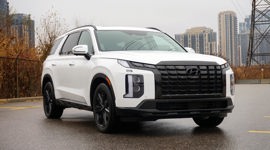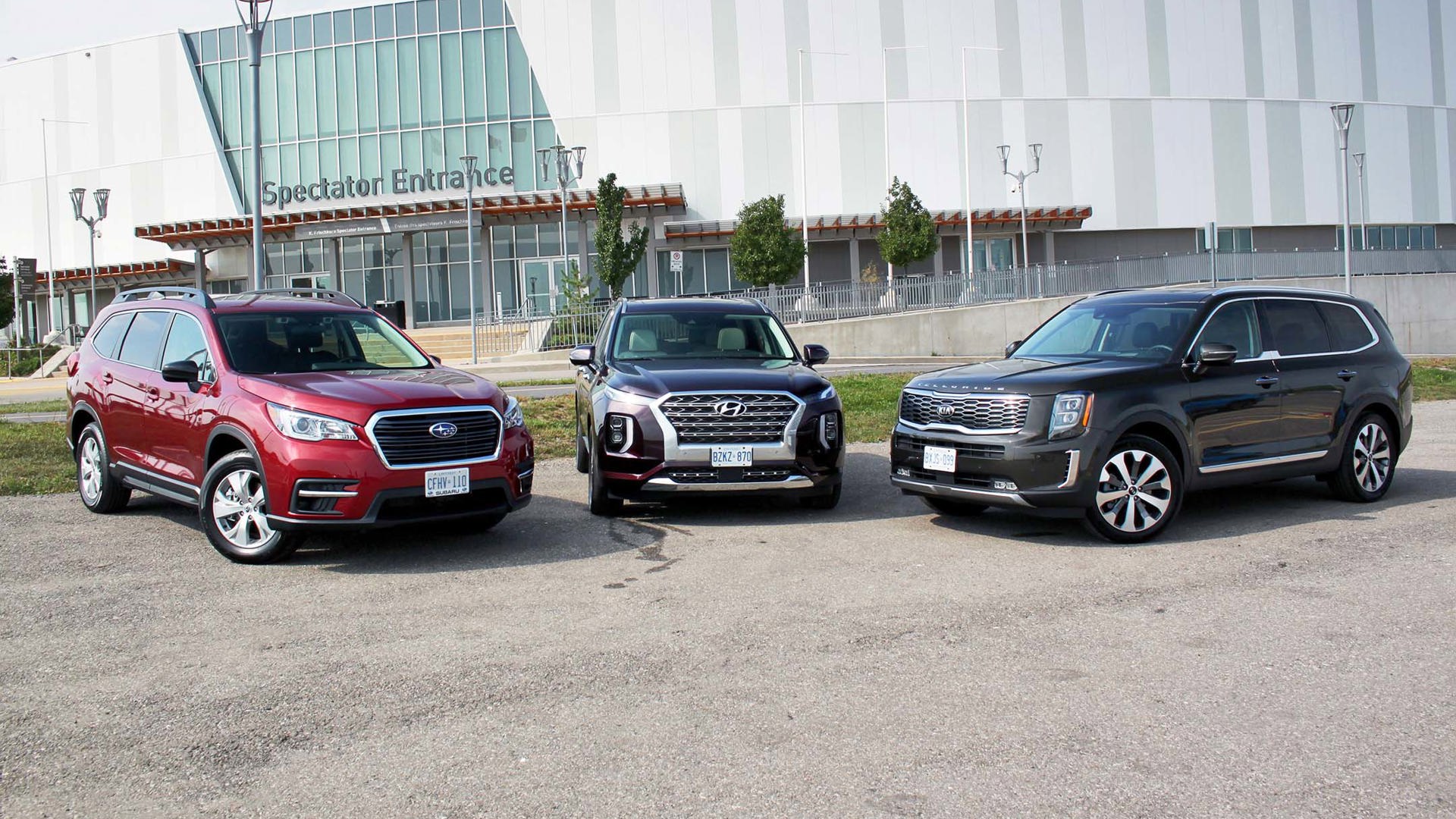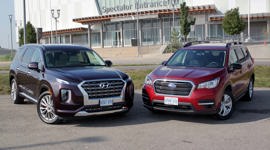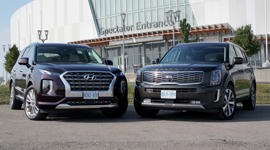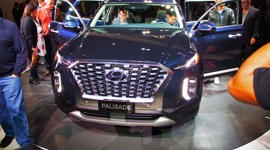 AutoTrader SCORE
AutoTrader SCORE
-
STYLING7/10
-
Safety9/10
-
PRACTICALITY9/10
-
USER-FRIENDLINESS9/10
-
FEATURES9/10
-
POWER7/10
-
COMFORT8/10
-
DRIVING FEEL7/10
-
FUEL ECONOMY8/10
-
VALUE8/10
The 2020 Hyundai Palisade arrives as a replacement for the Santa Fe XL, yes, but the similarities pretty much stop at the badge on the nose.
Otherwise, it’s an all-new take on the three-row SUV for Hyundai – one that boasts a magnificent interior, good off-road capability, unique looks, and more tech than an electronics shop. It’s also bigger than its predecessor, with the clear intention of really taking the fight to the biggest three-row players from Honda, Ford, and Volkswagen.
Styling: 7/10
The aesthetic remains a point of contention for me. I found the Palisade to be unique but strange when I first saw it at the 2018 Los Angeles auto show. After spending a week with it and having more time to consider its angles and details out from under the show lights, I’m still just not sure.
On one hand, you’ve got the authoritative – and somewhat traditional – touches: squared-off corners where the tailgate meets the roof; big, angular door mirrors; and a tall roof and ride height. On the other hand, you have that bonkers fascia with the headlights dropped so they sit lower than the top of the massive grille, daytime running lights that look like actual headlights above them, and futuristic vertical taillights around back. The wheels on my tester, meanwhile, kind of split the difference between contemporary and futuristic styling, though their 20-inch diameter has them looking a little small against the massive fender panels.
In short, it’s almost Nissan Armada-like when seen in profile, and something entirely different from the front and rear three-quarter views. Am I a fan? Well, I respect how distinctive it is, I just wonder how well it’s going to age.
Inside, the cabin is sophisticated yet straightforward. The fact that the infotainment system is an all-touch interface and that gears are selected via buttons means the clutter caused by gearlevers or infotainment scroll wheels is not here to trouble users. There’s a drive mode select wheel, but its low profile keeps it out of the way unless needed. It’s a stark contrast to the button-filled dash of Hyundai’s own Nexo fuel-cell crossover, which features more buttons than the cockpit of a Boeing 787. By contrast, the Palisade’s cabin is absolutely fantastic and, coupled with the dual-pane sunroof, a relaxing, airy place to be.
Features: 9/10
Being the top-spec Ultimate trim, my tester had all the bells and whistles: digital gauge cluster, tri-zone climate control, all-wheel drive, acoustic-laminated windshield and front side glass, second-row heated captain’s chairs, auto-levelling rear suspension – the list goes on and on. And you get it all for less than $55,000, making the Palisade one heck of an option if you’re looking for a luxurious drive experience without having to go to the traditional luxury brands. In fact, how this isn’t part of the Genesis luxury brand’s portfolio is beyond me. We’ll see how the upcoming Genesis GV80 compares – it certainly has its work cut out for it.
User Friendliness: 9/10
Both Android Auto and Apple CarPlay come standard, and they are displayed across a big 12.3-inch widescreen display atop the dash. (The black frame around it, meanwhile, makes the screen look a little bigger.) In addition to being well-sized, the touchscreen is a responsive one, and if you’d rather stick with Hyundai’s infotainment interface, you won’t be disappointed. Like BMW’s latest iDrive, the system provides a three-tiled interface that is crisp, clear, and easy to use.
The 360-degree camera system allows you to cycle through views out the back, along the side, or directly over top, making parking that much easier. The lack of a self-parking system is perhaps a notable absence at this level – one is available in the Ford Explorer, for example – but the cameras really do make this the next best thing.
While the lowered button count makes for a less cluttered look, the worry is that it may make it a little tougher to find certain controls, as you may have to search through various menus in order to do so. While there is some of that here, the rest is pretty straightforward and easy to use.
Another neat feature for this category is the cabin intercom system, which allows front-seat passengers – parents, most likely – to communicate with rear seat passengers without having to yell or turn their heads. Not that this is especially important considering how quiet the Palisade drives, but it’s nice to have, particularly when it comes time to communicate with third-row occupants.
The fact that there’s no rear-seat entertainment option is a minor quibble, especially when you consider that you can spec a tablet holder for the second row. The bigger issue in this regard is that there’s no Wi-Fi hotspot, so if the kiddos want to stream Peppa Pig through Netflix on a road trip, a decent data plan – or the foresight to download – is required.
Comfort: 8/10
On paper, the 4,398 L of interior volume the Palisade has should mean plenty of room for people (and families) of all shapes as sizes – and it does. The squared-off cabin means space is plentiful in the first and second rows, while the third row is a properly usable one that sits a little higher so those stationed there have a better view forward. It’s also well-equipped, with two USB ports and four cup holders for rearmost passengers. Will adults be comfortable there on long journeys? Probably not, but I imagine I’d have a better time with the Palisade than with most other three-row SUVs. Helping matters are the available captain’s chairs, which make getting back there is a cinch.
The second row, meanwhile, can slide fore and aft so the rear seat occupants get a little more room, but even with the seat almost all the way forward on its rails, I was still able to fit a rear-facing child’s seat without overly compromising front passenger space. Those second-row seats were also heated in my tester, while the front seats were both heated and cooled.
In addition, the Ultimate model comes with gorgeous Nappa leather seats (with a heated second row on all but the base model) as well as acoustically laminated windshield and front side glass to quiet the ride and once again have me asking: How is this not a Genesis?
Practicality: 9/10
Topping my list in the Palisade’s case for practicality is interior room, which, as described, is ample. Next up is just how easy it is to load, helped by one important party trick in particular. To pop the hatch, all you need to do is approach it with a key in your pocket, pause a second until you hear a beep, and the tailgate swings open – no need to wave a toe underneath the rear bumper or dance the cha-cha in an effort to find the sensor, just approach it and you’re good. It’s great for when your hands are full, but it’s not something I used in normal circumstances, as I’d rather have the hatch open once I arrive by using the button on the dash or key fob.
Otherwise, it does everything you’d expect a full-size SUV to do: seats that fold flat (with a power-folding third row in my tester), ample storage in the front seats, and some underfloor storage at the edge of the cargo area so there’s a little extra packability even when the third row is deployed.
Power: 7/10
No matter which of the four trims you choose (there are actually six if you include the eight-passenger options of the base Essential trim and second-from-top Luxury trim; the Ultimate comes in seven-person configuration only), there’s only one powertrain offered: a 3.8L V6 that’s good for 291 hp and 262 lb-ft mated to an eight-speed automatic transmission. (Before you even ask, yes, those are the same figures made by the Palisade’s Kia Telluride cousin.)
Being a naturally aspirated engine, torque is delivered smoothly and without the type of surging often associated with the turbocharged motors that are so popular these days. Still, at about 2,000 kg, the Palisade is a heavy vehicle and I wouldn’t call its reaction time off the line sprightly.
Once at speed, however, passing manoeuvres and the like aren’t an issue, which is what you really want from a vehicle like this. You don’t need it sprinting off the line, driving occupants’ backs into their seats and unnecessarily wasting fuel in the process. It’s better to have a vehicle with a progressive torque band that can get you out of most any sticky situation.
Of course, if you want a little more zip, you can activate sport mode by twisting the drive mode select wheel; it’s the same wheel used to modify the all-wheel drive system, too. All it takes is the press of a button to start modifying the various traction modes as opposed to the powertrain. It’s slick, serving once again to reduce the number of buttons on the dash and centre stack.
You’ll want to be careful in Eco mode though, as it really reduces throttle input, and for a vehicle that’s already asking its engine to do a lot, lets just say it’s a mode you want to stay out of in everything but the easiest highway cruises and stop-and-go traffic.
Driving Feel: 7.5/10
If there was one area where there’s no confusing the Palisade with a Genesis product it’s the ride. Don’t get me wrong – it’s not bad by any means. But it feels truck-like enough to not quite clear the bar required of modern premium SUVs. Bigger bumps can definitely be felt, and while its attitude over smaller, repetitive bumps is better, I had trouble shaking the truck-like perception that immediately presented itself and persisted during my testing.
It’s by no means a deal-breaker, though, because the rest of the handling package is good. The steering is surprisingly direct for such a large vehicle, yet not so nervous that I found myself constantly having to input corrective measures over long highway jaunts. The biggest takeaway was just how solid the steering rack felt. The jitters absorbed by the chassis aren’t felt through the wheel, and you really get the sense that the engineers wanted the steering to inspire confidence in the driver (which it does).
Of course, being such a tall vehicle there will be body roll around sharper, faster corners, but it’s not like I would tell anyone with a history of motion sickness to stay away. It’s not nearly as bad as its massive frame might suggest. The self-levelling rear suspension works as advertised.
Safety: 9.5/10
All the stuff you’d expect from a vehicle that starts at about $40,000 is here at base: traction control, stability control – it’s all present. What I was surprised to find was the less common stuff like lane-keep assist and lane-follow assist (helping you keep the Palisade centred in the lane when cruise control is activated), adaptive cruise control, automatic high-beams, forward collision assist with pedestrian detection, and reverse park distance warning. That’s a heck of a lot of kit.
On top of that, all Palisades except base models get safe-exit assist tech, which prevents drivers from deactivating child safety locks once parked if it senses traffic approaching, so passengers don’t inadvertently open a door into approaching traffic.
But wait! There’s more! At least in my tester there is, because the seven-inch display that serves as the gauge cluster doubles as a digital blind-spot monitor. Essentially, the left or the right side of the gauge cluster becomes a blind-spot camera as soon as you flick the signal stalk in that direction. It’s a great system, though I did find the video to be a little choppier than the same system in both the Telluride and the Genesis G90. It’s distracting, but more of a nitpick, really; the bottom line is this technology is worthy of the Palisade’s luxurious undertones.
Value: 8.5/10
With all those safety features, that fantastic interior ambiance, and classy exterior, the Palisade is an absolute hit in the value department. No matter how many bits and pieces you add to the Palisade, you’ll be hard-pressed to have it land above $55,000 before freight, fees, and taxes.
Fuel Economy: 8.5/10
At 11.1 L/100 km combined according to Natural Resources Canada, the Hyundai Palisade sits ahead of many of its AWD competitors in fuel efficiency – with the Mazda CX-9, Subaru Ascent, and Toyota Highlander being notable exceptions, managing 10.5, 10.4, and 10.3 L/100 km respectively. Curiously, the closely related Telluride does slightly worse at 11.2 L/100 km.
The Verdict
It’s hard to find much fault with the Hyundai Palisade. It comes well-equipped at base and, depending on trim, it can be quite luxuriously equipped; the V6 engine is powerful when you need it; and the space inside is ample. The Hyundai nameplate is one that’s come a long way over the years, but still has some work to do to build brand equity equalling the likes of Honda and Toyota. For its part, the Palisade stands as a fantastic indicator of what the brand is capable of in terms of build quality, safety, and in-vehicle technology.
| Engine Displacement | 3.8L |
|---|---|
| Engine Cylinders | V6 |
| Peak Horsepower | 291 hp @ 6,000 rpm |
| Peak Torque | 262 lb-ft @ 5,200 rpm |
| Fuel Economy | 12.3/9.6/11.1 L/100 km cty/hwy/cmb |
| Cargo Space | 509 / 1,267 / 2,447 L behind 3rd/2nd/1st row |
| Model Tested | 2020 Hyundai Palisade Ultimate |
| Base Price | $54,199 |
| A/C Tax | $100 |
| Destination Fee | $1,910 |
| Price as Tested | $56,209 |
|
Optional Equipment
None
|
|
